Forums
- Forums
- Axis And Allies Forum
- General Discussion
- Aviation News
Aviation News
Post a reply
- Go to Next topic
- Go to Welcome
- Go to Introduce Yourself
- Go to General Discussion
- Go to Screenshots, Images and Videos
- Go to Off topic
- Go to Works in Progress
- Go to Skinning Tips / Tutorials
- Go to Skin Requests
- Go to IJAAF Library
- Go to Luftwaffe Library
- Go to RAF Library
- Go to USAAF / USN Library
- Go to Misc Library
- Go to The Ops Room
- Go to Made in Germany
- Go to Campaigns and Missions
- Go to Works in Progress
- Go to Juri's Air-Raid Shelter
- Go to Campaigns and Missions
- Go to Works in Progress
- Go to Skinpacks
- Go to External Projects Discussion
- Go to Books & Resources
-
 Main AdminA P-51 Mustang rests on the flightline during the 2017 Heritage Flight Training and Certification Course at Davis-Monthan Air Force Base, Ariz., Feb. 10, 2017. Established in 1997, the HFTCC certifies civilian pilots of historic military aircraft and U.S. Air Force pilots to fly in formation together during the upcoming air show season. (U.S. Air Force photo by Senior Airman Ashley N. Steffen)
Main AdminA P-51 Mustang rests on the flightline during the 2017 Heritage Flight Training and Certification Course at Davis-Monthan Air Force Base, Ariz., Feb. 10, 2017. Established in 1997, the HFTCC certifies civilian pilots of historic military aircraft and U.S. Air Force pilots to fly in formation together during the upcoming air show season. (U.S. Air Force photo by Senior Airman Ashley N. Steffen)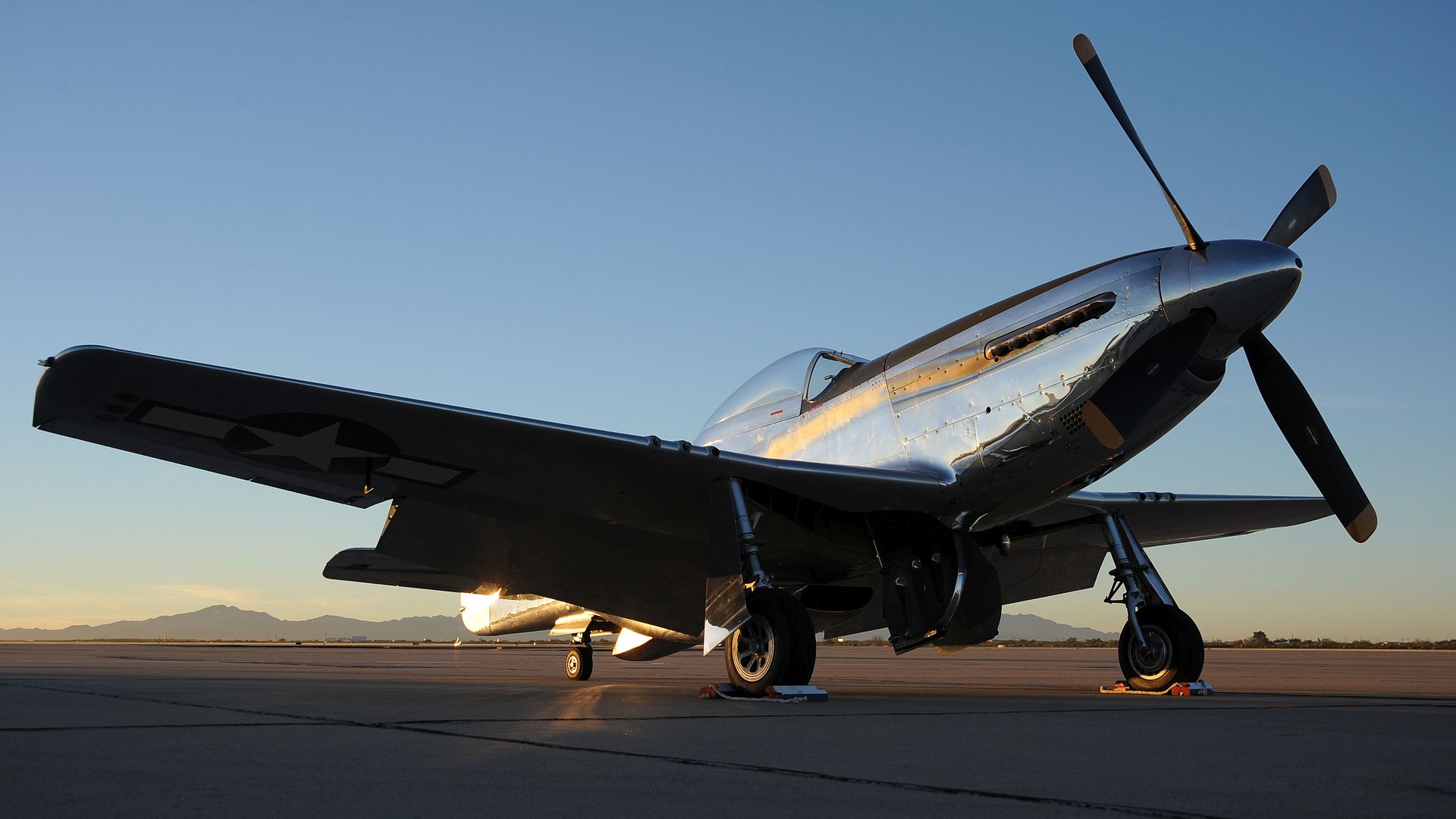
A U.S. Air Force F-35 Lightning II flies above spectators during the 2017 Heritage Flight Training and Certification Course at Davis-Monthan Air Force Base, Ariz., Feb. 9, 2017. The HFTCC provides civilian and military pilots the opportunity to practice flying in formation together in preparation for future air shows. (U.S. Air Force photo by Senior Airman Ashley N. Steffen)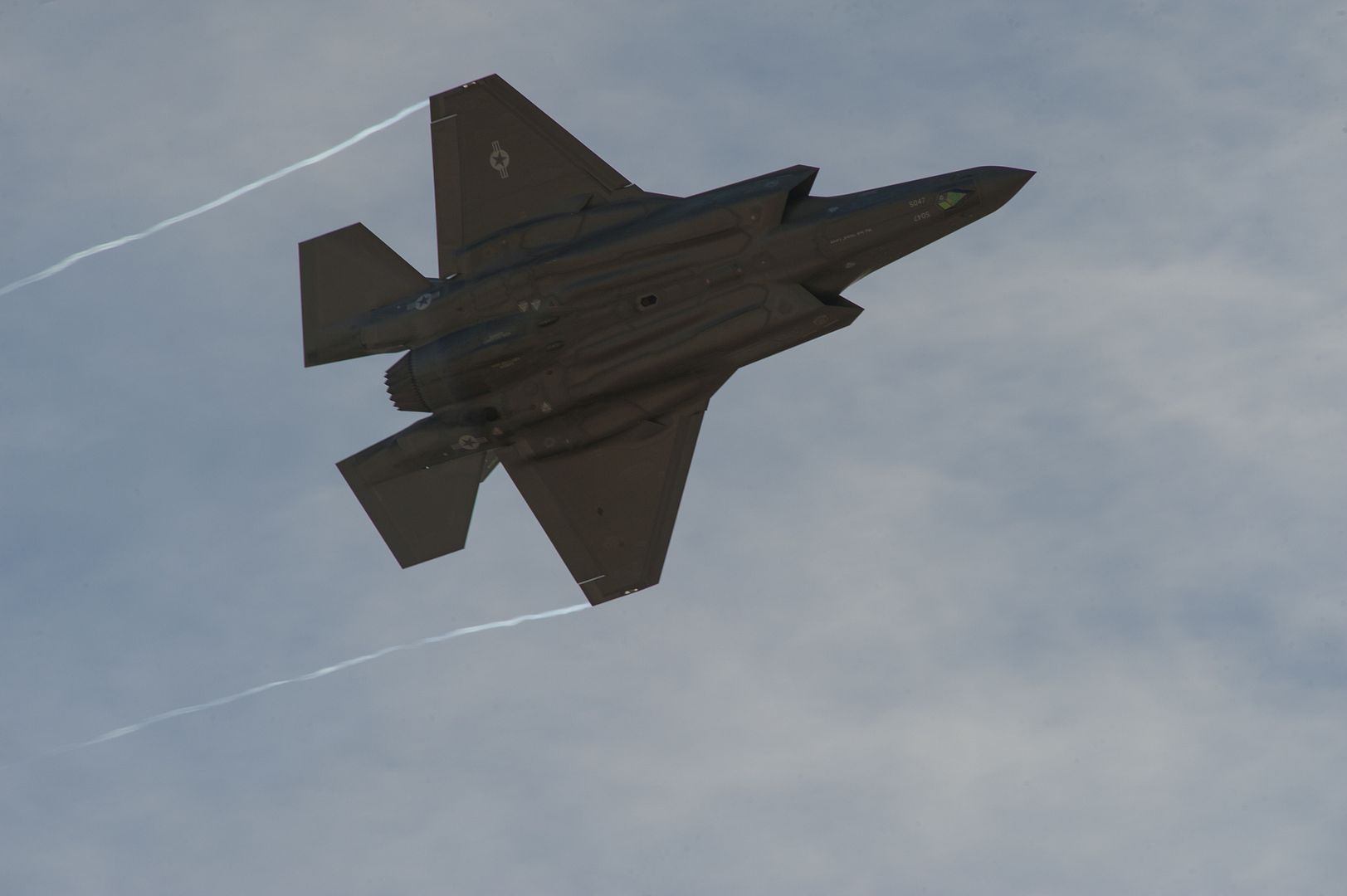
ATLANTIC OCEAN (Feb. 9, 2017) A T-45C Goshawk assigned to Carrier Training Wing (CTW) 2 flies past the flight deck of the aircraft carrier USS Dwight D. Eisenhower (CVN 69) (Ike). Ike is currently conducting aircraft carrier qualifications during the sustainment phase of the Optimized Fleet Response Plan (OFRP). (U.S. Navy photo by Mass Communication Specialist Seaman Apprentice Zach Sleeper)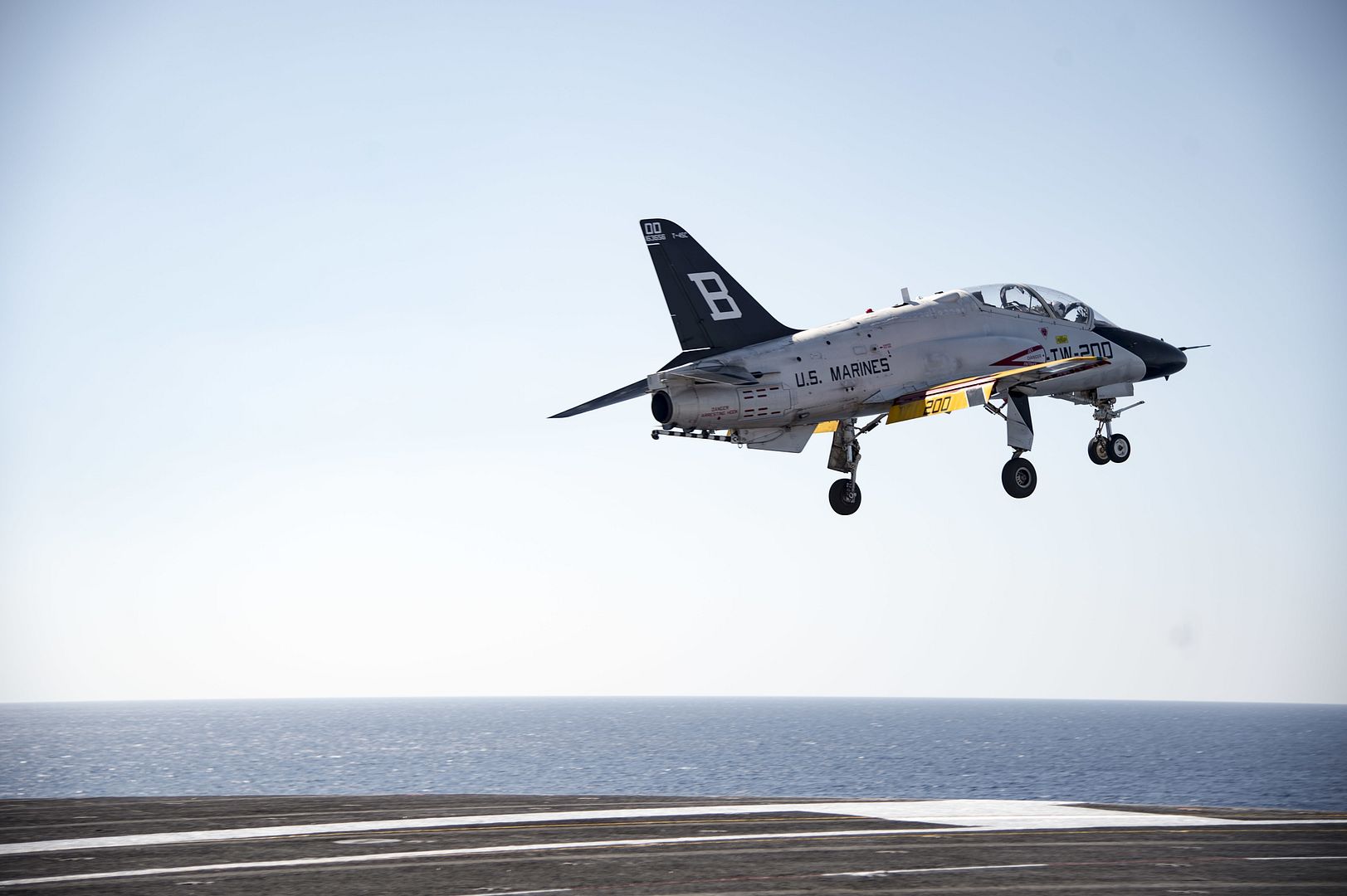
A U.S. Air Force F-16C Fighting Falcon and a P-51 Mustang fly in formation during the 2017 Heritage Flight Training and Certification Course at Davis-Monthan Air Force Base, Ariz., Feb. 10, 2017. The annual aerial demonstration training event has been held at D-M since 2001, the course featured aerial demonstrations from historical and modern fighter aircraft. (U.S. Air Force photo by Airman 1st Class Mya M. Crosby)
SANTA RITA, Guam (Feb. 10, 2017) The Nimitz-class aircraft carrier USS Carl Vinson (CVN 70) pulls into Naval Base Guam, Feb. 10. Vinson is on a regularly scheduled Western Pacific deployment with the Carl Vinson Carrier Strike Group as part of the U.S. Pacific Fleet-led initiative to extend the command and control functions of the U.S. 3rd Fleet in the Indo-Asia-Pacific region. Navy aircraft carrier strike groups have patrolled the Indo-Asia-Pacific regularly and routinely for more than 70 years.
(U.S. Navy photo by Mass Communication Specialist 2nd Class Allen Michael McNair/Released)
A P-51 Mustang taxis down the flight line during the 2017 Heritage Flight Training and Certification Course at Davis-Monthan Air Force Base, Ariz., Feb. 10, 2017. The modern aircraft that participated in this year's HFTCC were the F-35 Lightning II, the F-22 Raptor, the F-16 Fighting Falcon and the A-10C Thunderbolt II. The historic aircraft included the P-51 and T-51 Mustang, the P-40 Warhawk, the P-38 Lightning, the P-47 Thunderbolt, the T-33 Shooting Star and the F-86 Sabre. (U.S. Air Force photo by Airman 1st Class Giovanni Sims)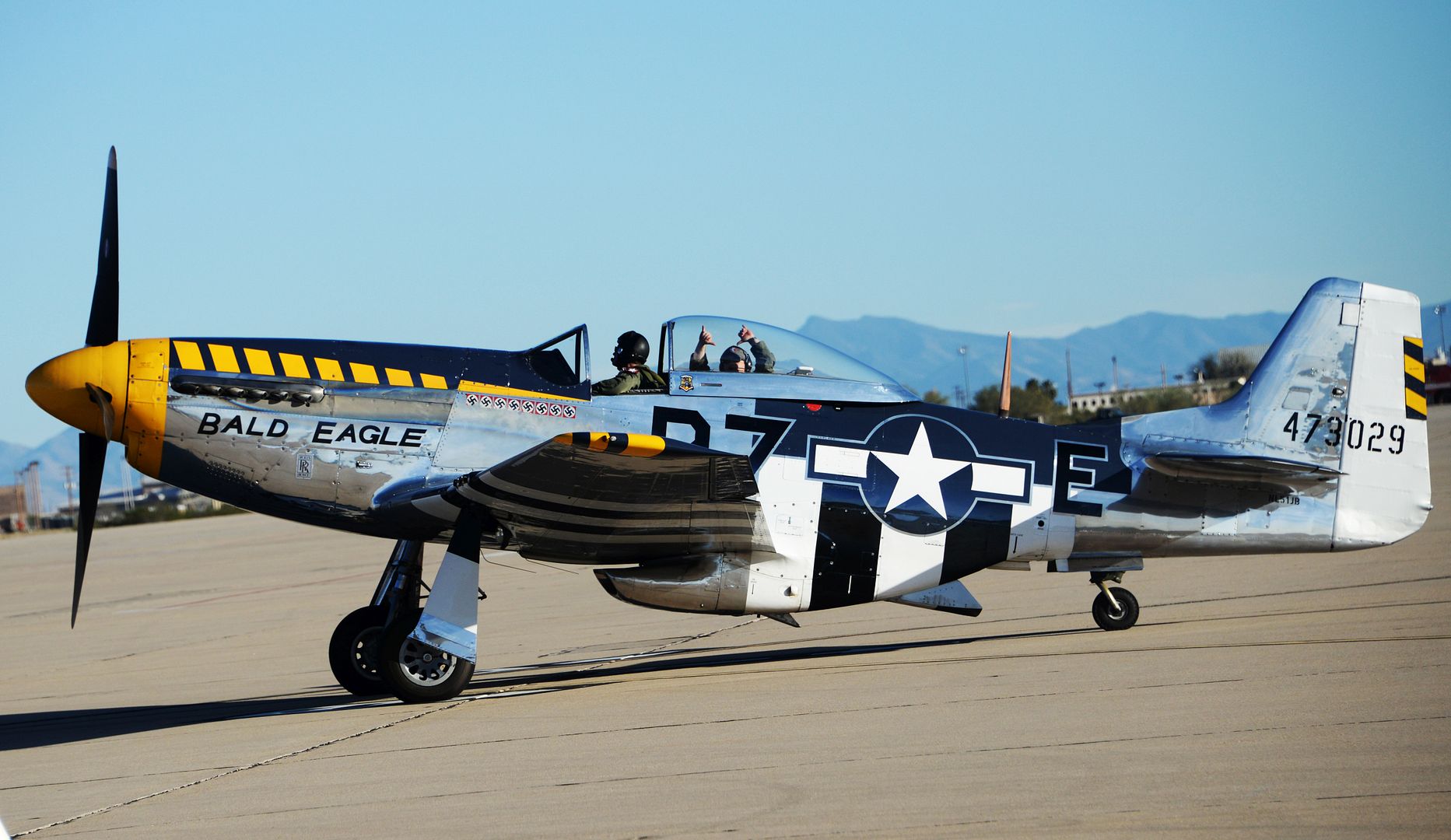
A U.S. Air Force F-22 Raptor and an F-86 Sabre fly together during the 2017 Heritage Flight Training and Certification Course at Davis-Monthan Air Force Base, Ariz., Feb. 10, 2017. During the course, aircrews practice ground and flight training to enable civilian pilots of historic military aircraft and U.S. Air Force pilots of current fighter aircraft to fly safely in formations together. (U.S. Air Force photo by Senior Airman Chris Drzazgowski)
An F-86 Sabre takes off during the 2017 Heritage Flight Training and Certification Course at Davis-Monthan Air Force Base, Ariz., Feb. 10, 2017. The first production model of the F-86 flew in 1948 and supported the Strategic Air Command from 1949 to 1950. (U.S. Air Force photo by Senior Airman Chris Drzazgowski)
A U.S. Air Force F-22 Raptor performs a right bank during the 2017 Heritage Flight Training and Certification Course at Davis-Monthan Air Force Base, Ariz., Feb. 10, 2017. The Raptor performs both air-to-air and air-to-ground missions allowing full realization of operational concepts vital to the 21st century Air Force. (U.S. Air Force photo by Senior Airman Chris Drzazgowski)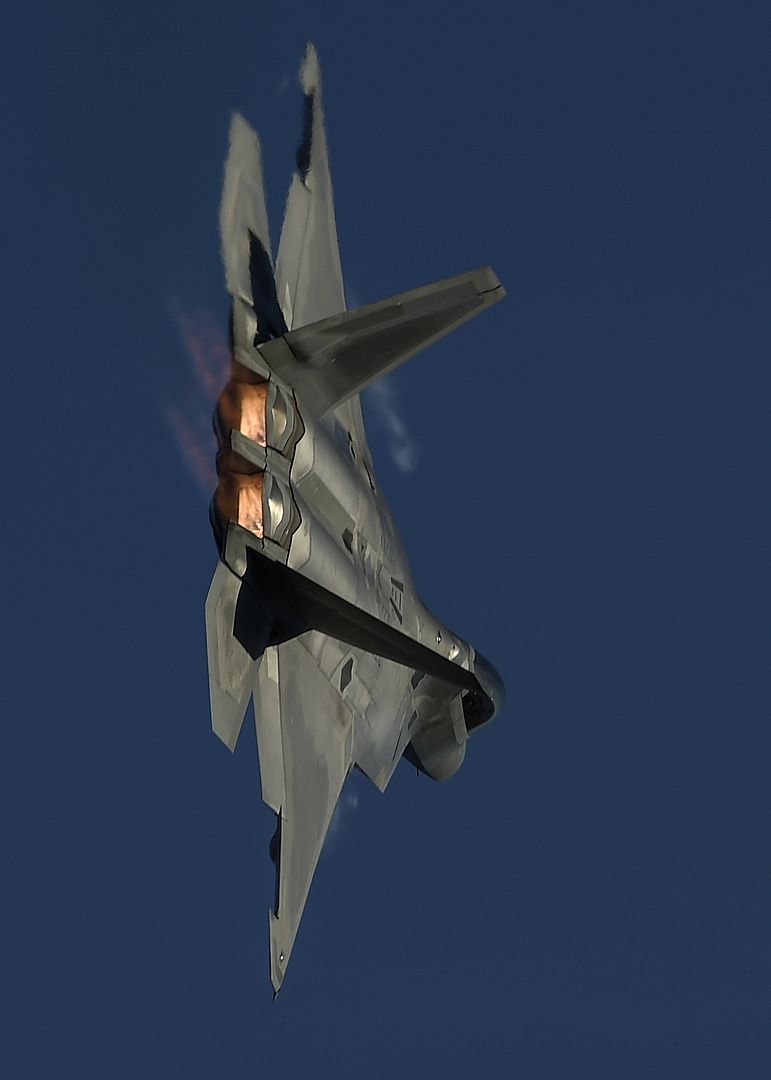
A 380th Air Expeditionary Wing U-2 Dragon Lady launches from an undisclosed location in Southwest Asia, Feb. 10, 2017. The historic U-2 has been in operation since the 1960s and continues its legacy in Combined Joint Task Force-Operation Inherent Resolve. (U.S. Air Force photo's/Senior Airman Tyler Woodward)
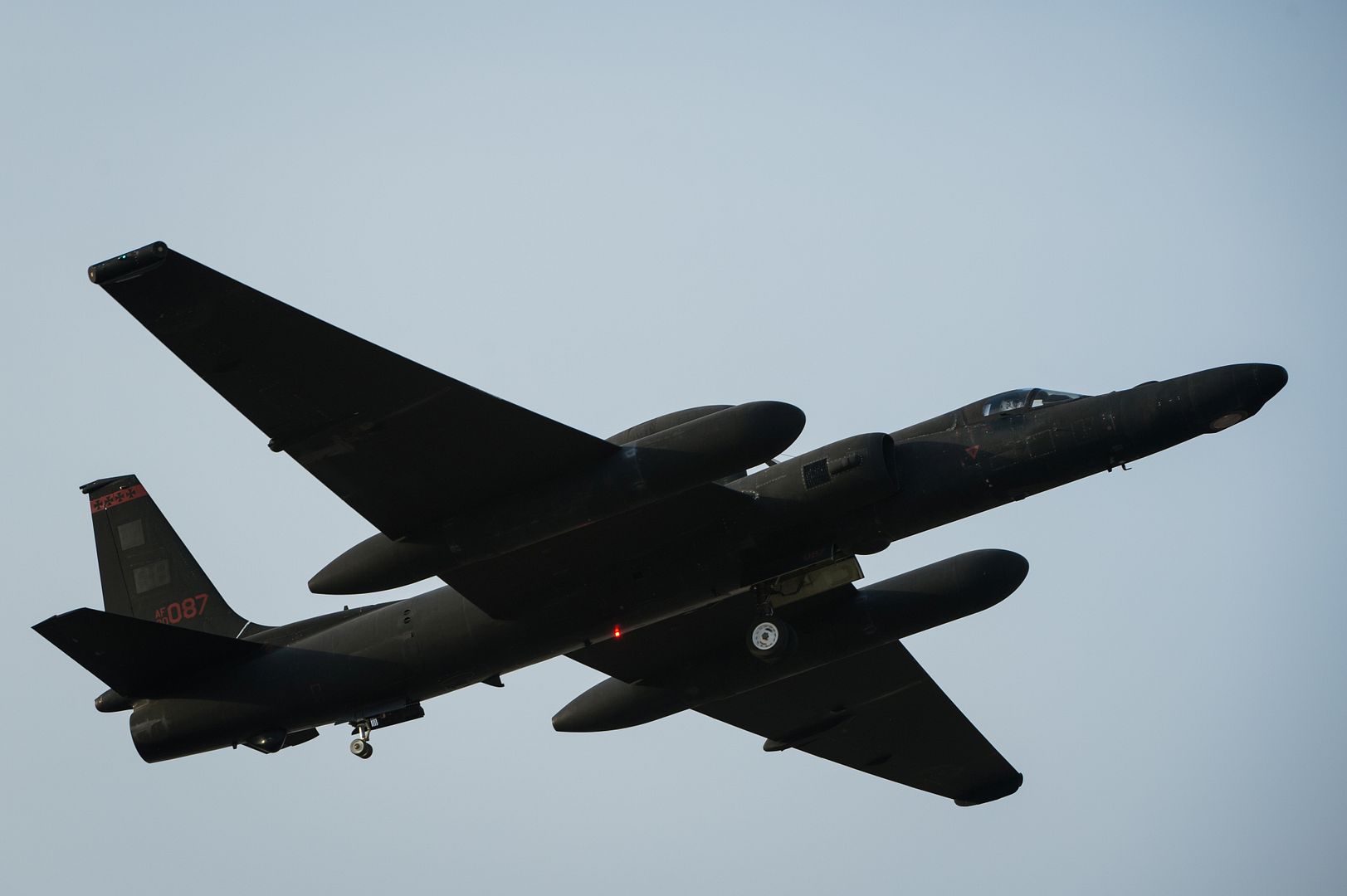
A French Dassault Atlantique 2 launches from an undisclosed location in Southwest Asia, Feb. 10, 2017. During Combined Joint Task Force-Operation Inherent Resolve, France has assisted in training Iraqi Security Forces, conducting air strikes, patrolling for surveillance and intelligence-gathering dedicated to the defeat of ISIS in Iraq and Syria. (U.S. Air Force photo/Senior Airman Tyler Woodward)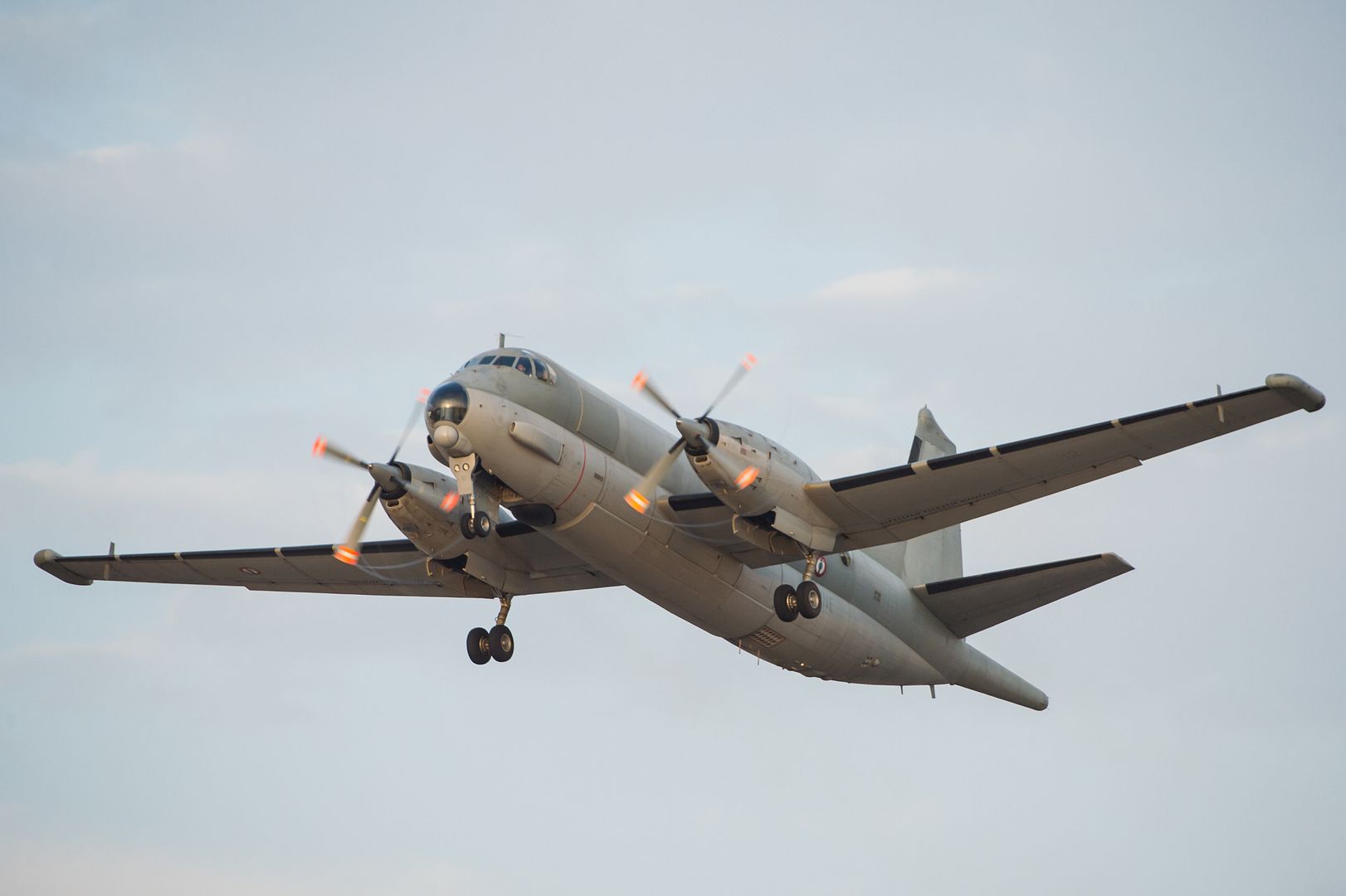
As part of routine operations securing the skies, Quick Reaction Alert Typhoon aircraft were launched this week to monitor two Russian Blackjack Tupolev TU-160 bombers in the UK area of interest.
Aircraft and personnel from RAF Lossiemouth and RAF Coningsby provide Quick Reaction Alert cover 365 days a year.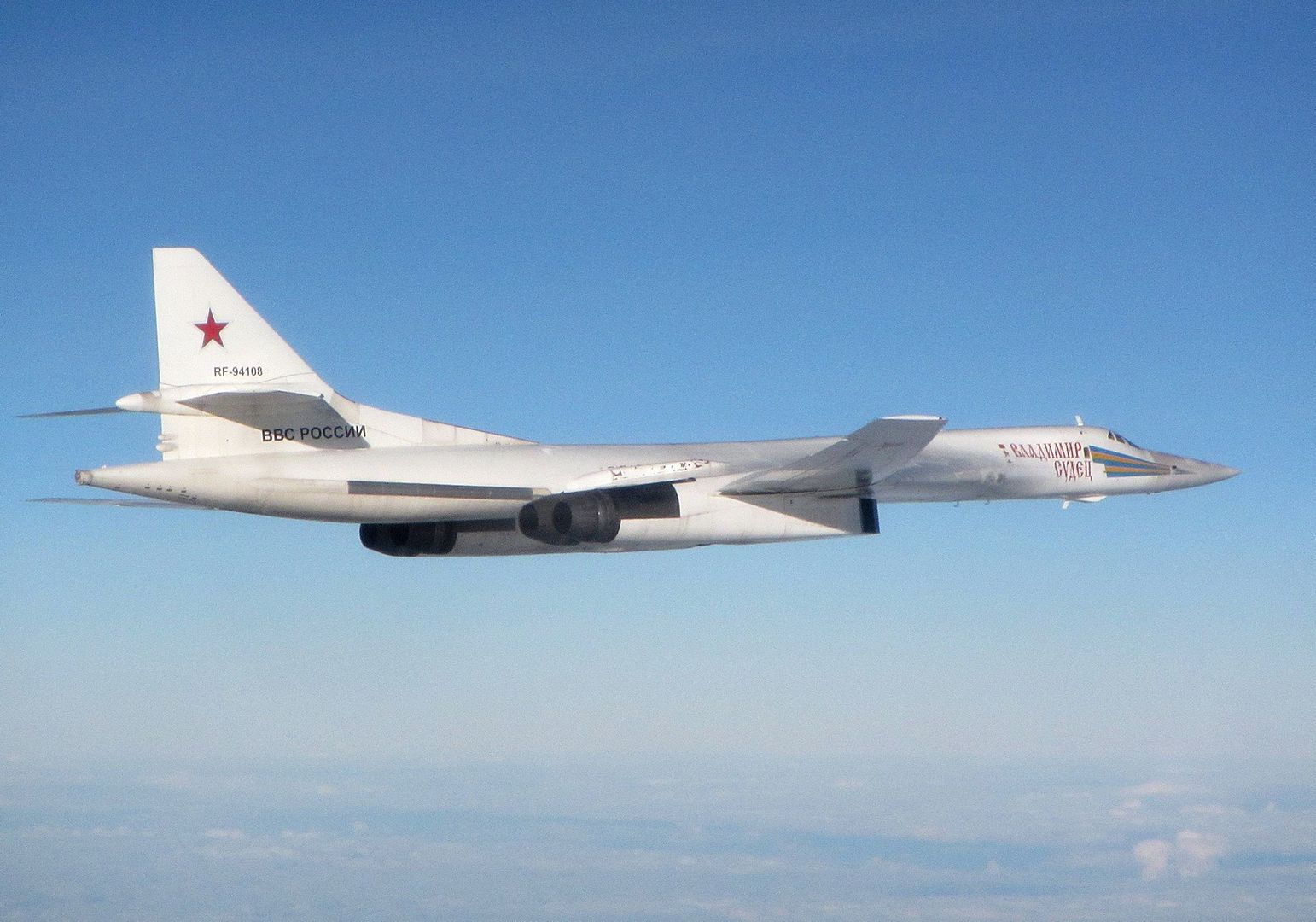
Northern Territory monsoonal rains have greeted the first group of United States Air Force F22s at RAAF Tindal ahead of the first Enhanced Air Cooperation activity in Australia under the US Force Posture Initiatives.
The F22s are the largest and longest rotation of fifth-generation aircraft to visit Australia to date.
The F22s will conduct combined training activities with Number 75 Squadron F/A-18A/B Hornets along with ground assets and personnel.
-
 Main AdminA P-51 Mustang and a P-47 Thunderbolt take off during the 2017 Heritage Flight Training and Certification Course at Davis-Monthan Air Force Base, Ariz., Feb. 11, 2017. The annual aerial demonstration training event has been held at D-M since 2001 and featured aerial demonstrations from historical and modern fighter aircraft. (U.S. Air Force Photo by Airman 1st Class Nathan H. Barbour)
Main AdminA P-51 Mustang and a P-47 Thunderbolt take off during the 2017 Heritage Flight Training and Certification Course at Davis-Monthan Air Force Base, Ariz., Feb. 11, 2017. The annual aerial demonstration training event has been held at D-M since 2001 and featured aerial demonstrations from historical and modern fighter aircraft. (U.S. Air Force Photo by Airman 1st Class Nathan H. Barbour)
A P-51 Mustang stages on the flight line during the 2017 Heritage Flight Training and Certification Course at Davis-Monthan Air Force Base, Ariz., Feb. 11, 2017. During the course, aircrews practice ground and flight training to enable civilian pilots of historic military aircraft and U.S. Air Force pilots of current fighter aircraft to safely fly in formations together. (U.S. Air Force Photo by Airman 1st Class Nathan H. Barbour)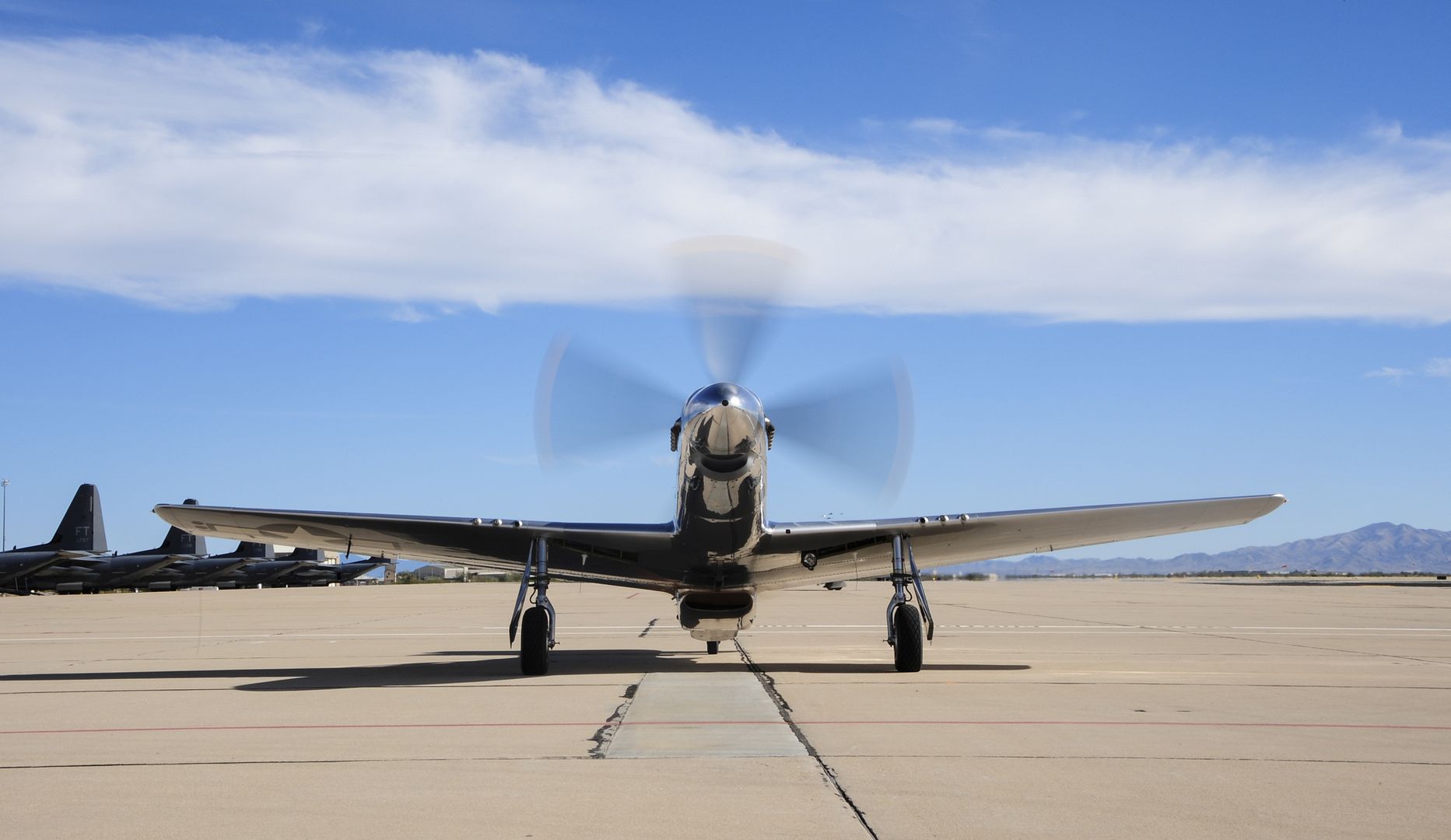
A P-51 Mustang rests on the flightline during the 2017 Heritage Flight Training and Certification Course at Davis-Monthan Air Force Base, Ariz., Feb. 11, 2017. Established in 1997, the HFTCC certifies civilian pilots of historic military aircraft and U.S. Air Force pilots to fly in formation together during the upcoming air show season. (U.S. Air Force photo by Senior Airman Ashley N. Steffen)
A U.S. Air Force F-22 Raptor, a F-86 Sabre and a P-51 Mustang fly in formation over historic aircraft during the 2017 Heritage Flight Training and Certification Course at Davis-Monthan Air Force Base, Ariz., Feb. 11, 2017.Established in 1997, the HFTCC certifies civilian pilots of historic military aircraft and U.S. Air Force pilots to fly in formation together during the upcoming air show season. (U.S. Air Force photo by Senior Airman Betty R. Chevalier)
Two U.S. Air Force A-10C Thunderbolt II's, and two P-51 Mustangs fly in formation over a F-35 Lightning II during the 2017 Heritage Flight Training and Certification Course at Davis-Monthan Air Force Base, Ariz., Feb. 11, 2017. During the course, aircrews practice ground and flight training to enable civilian pilots of historic military aircraft and U.S. Air Force pilots of current fighter aircraft to fly safely in formations together. (U.S. Air Force photo by Senior Airman Betty R. Chevalier)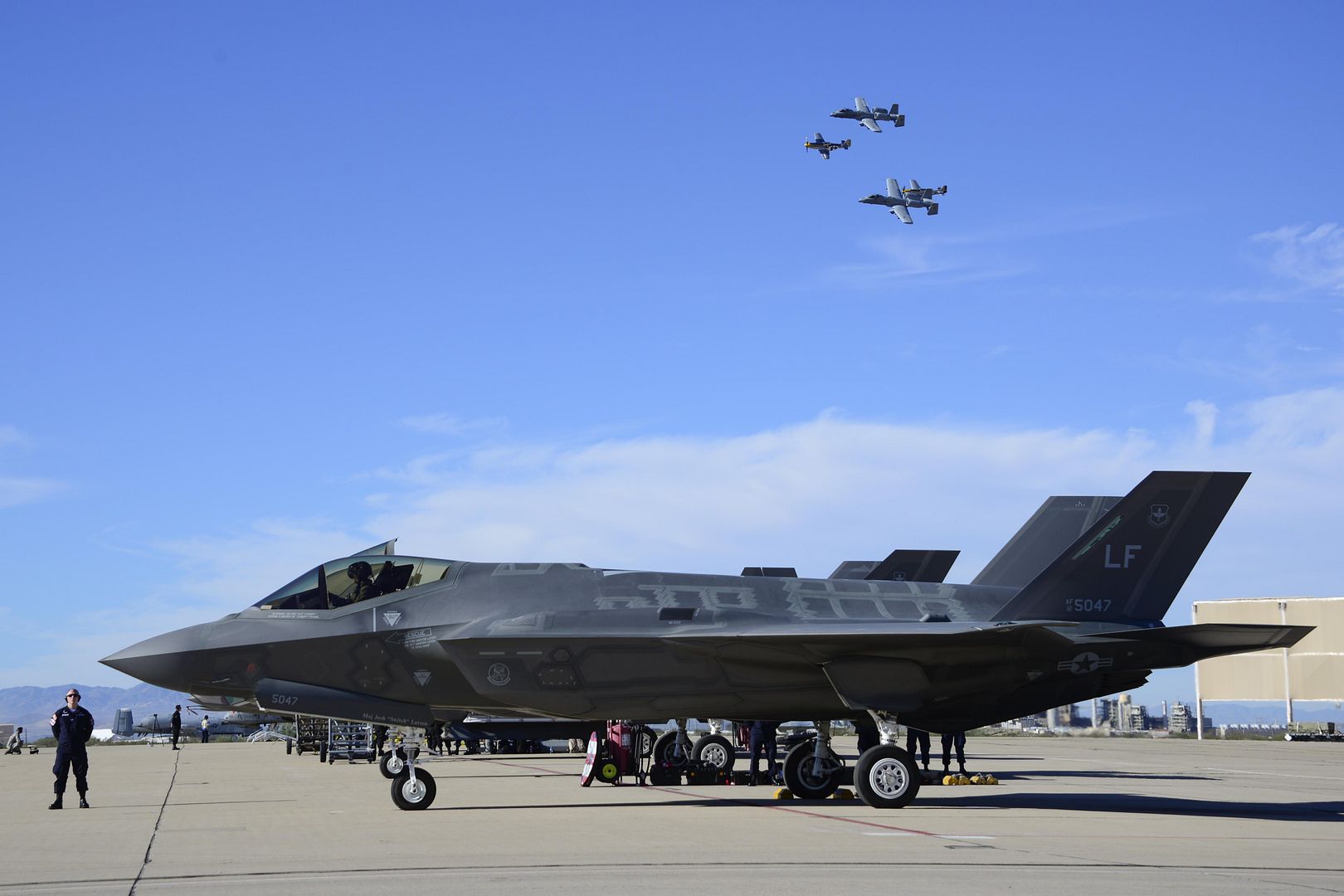
Royal Canadian Air Force
Personnel and aircraft from the Royal Canadian Air Force?s 401 Tactical Fighter Squadron deployed to Exercises Combat Archer and Combat Hammer at Tyndall Air Force Base, Florida, from January 16 to February 10, 2017.
The exercise was the first time 401 Tactical Fighter Squadron had deployed a detachment of personnel since the fall of 2015. The training provided members of CF-188 Hornet squadrons with a valued opportunity to employ live air-to-air and air-to-ground weapons systems in Tyndall?s dynamic training environment.
Participation in these exercises enhances the RCAF?s readiness for missions, and builds the RCAF?s excellent relations with the United States Air Force.
?These exercises are a tremendous opportunity for not only the members of 401 Squadron, but the RCAF?s Fighter Force as a whole. It isn?t every day we have the chance to practice our live weapons capabilities, across all stages of the operation, said Lieutenant-Colonel Joe Mullins, the commanding officer of 401 Squadron. ?The goal of this exercise was to improve capabilities, identify points of strength and areas of improvement, and ultimately prepare ourselves for the next time we are called into combat.?
Approximately 120 personnel, 13 CF-188 Hornet fighter aircraft, a CC-150T Polaris air-to-air refuelling aircraft, a CC-130T Hercules air-to-air refuelling aircraft and two Dornier Alpha Jets deployed to Tyndall Air Force Base, Florida, from across Canada:
4 Wing/CFB Cold Lake, Alberta: 401 Tactical Fighter Squadron, 1 Air Maintenance Squadron, 4 Wing Telecommunication and Information Services section, the Fighter Standards and Evaluation Team, and the Fighter Operational Test and Evaluation Flight from 410 Tactical Fighter (Operation Training) Squadron
8 Wing Trenton, Ontario: 437 Transport Squadron (January 30 ? February 10, 2017) (CC-150T Polaris air-to-air refueller)
17 Wing Winnipeg, Manitoba: 435 Transport and Rescue Squadron (January 16 ? 29, 2017) (CC-130T Hercules air-to-air refueller)
Ottawa, Ontario: Specialists from the Fighter Force?s System Effectiveness Monitoring Program (SEMP), an organization which falls under the Assistant Deputy Minister (Materiel)?s Director General, Aerospace Equipment Program Management, Fighters and Trainers
Discovery Air Defence Services: Dornier Alpha Jets (contracted)
Exercise facilitators came from a highly specialized group of units under the United States Air Force?s 53d Weapons Evaluation Group, including:
53d Test Support Squadron
81st Range Control Squadron
82d Aerial Targets Squadron
83d Fighter Weapons Squadron
86th Fighter Weapons Squadron
The deployment was divided into three parts:
Part one: One week of general training activities alongside United States Air Force aircraft, such as the F-15 Eagle and F-22 Raptor
Part two: Exercise Archer, a two-week, live air-to-air missile exercise, using the AIM-120, AIM-7 and AIM-9 missile systems against BQM-167 aerial drones
Part three: Exercise Combat Hammer, a one-week full scale air-to-ground bombing exercise, using inert GBU-12 laser guided bombs, coupled with state of the art targeting telemetry, against realistic and live targets located at the Eglin Air Force Base target range.
Parts two and three were facilitated by the United States Air Force?s Weapons Systems Evaluation Program. Its aim is to evaluate a unit?s capability to employ a variety of weapons systems throughout all stages of the process, from storage and preparation, to use on a target.
An AIM-7 air-to-air missile launches from a 401 Tactical Fighter Squadron CF-188 Hornet fighter on February 1, 2017, during Exercises Combat Archer and Combat Hammer, held at Tyndall Air Force Base, Florida.
Photo: Corporal Bryan Carter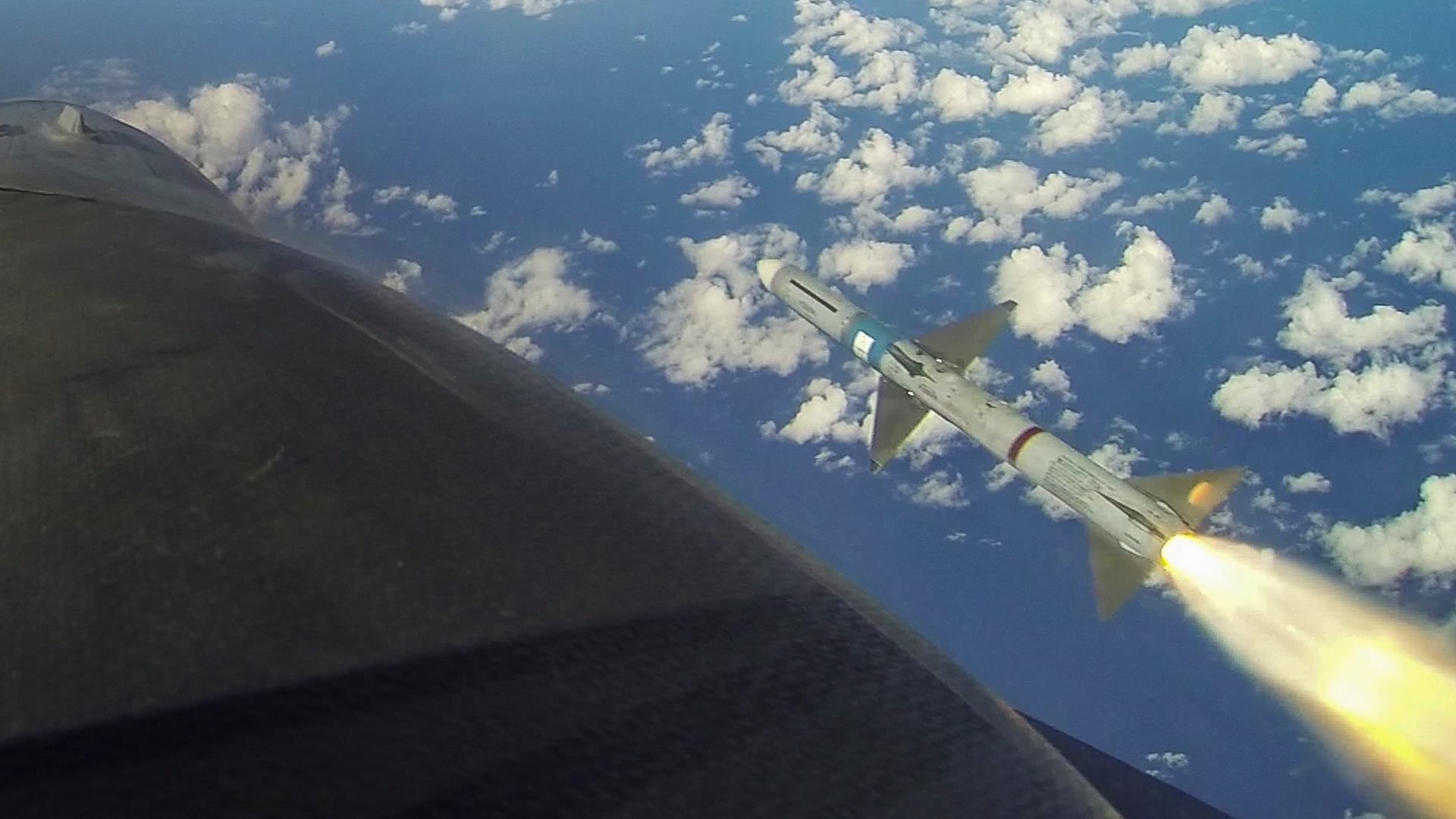
-
 Main AdminA KC-135 Stratotanker from the 128th Air Refueling Wing, Milwaukee, Wis, arrives at the 115th Fighter Wing flightline at Truax Field, Madison, Wis, Feb. 11, 2017. The KC-135 is returning with 115 FW Airmen who participated in a three-week exercise, Red Flag 17-1. The exercise was held at Nellis Air Force Base, Nev (U.S. Air National Guard Photo by Staff Sgt. Kyle Russell/Released).
Main AdminA KC-135 Stratotanker from the 128th Air Refueling Wing, Milwaukee, Wis, arrives at the 115th Fighter Wing flightline at Truax Field, Madison, Wis, Feb. 11, 2017. The KC-135 is returning with 115 FW Airmen who participated in a three-week exercise, Red Flag 17-1. The exercise was held at Nellis Air Force Base, Nev (U.S. Air National Guard Photo by Staff Sgt. Kyle Russell/Released).
Two F-16 Fighting Falcons from the 115th Fighter Wing, Madison, Wis, taxis back to the flightline, Feb 11, 2017. The jets were returning from a three-week exercise, Red Flag 17-1. The exercise was held at Nellis Air Force Base, Nev. More than 190 Airmen from the 115th FW participated (U.S. Air National Guard Photo by Staff Sgt. Kyle Russell/Released).
GULF OF ADEN (Feb. 12, 2017) Aviation Boatswain?s Mate (Handling) 3rd Class Jalisa Hill, from Spring, Texas, signals for an MV-22B Osprey, assigned to Marine Medium Tiltrotor Squadron (VMM) 163 (Reinforced), to land on the flight deck of the amphibious assault ship USS Makin Island (LHD . Makin Island is deployed in the U.S. 5th Fleet area of operations in support of maritime security operations designed to reassure allies and partners, and preserve the freedom of navigation and the free flow of commerce in the region. (U.S. Navy photo by Mass Communication Specialist 3rd Class Devin M. Langer)
. Makin Island is deployed in the U.S. 5th Fleet area of operations in support of maritime security operations designed to reassure allies and partners, and preserve the freedom of navigation and the free flow of commerce in the region. (U.S. Navy photo by Mass Communication Specialist 3rd Class Devin M. Langer) 
Two U.S. Air Force A-10C Thunderbolt IIs and two P-51 Mustangs fly in formation during the 2017 Heritage Flight Training and Certification Course at Davis-Monthan Air Force Base, Ariz., Feb. 12, 2017. The modern aircraft that participated in this year's HFTCC were the F-35 Lightning II, the F-22 Raptor, F-16 Fighting Falcon and the A-10C Thunderbolt II. (U.S. Air Force photo by Airman 1st Class Mya M. Crosby)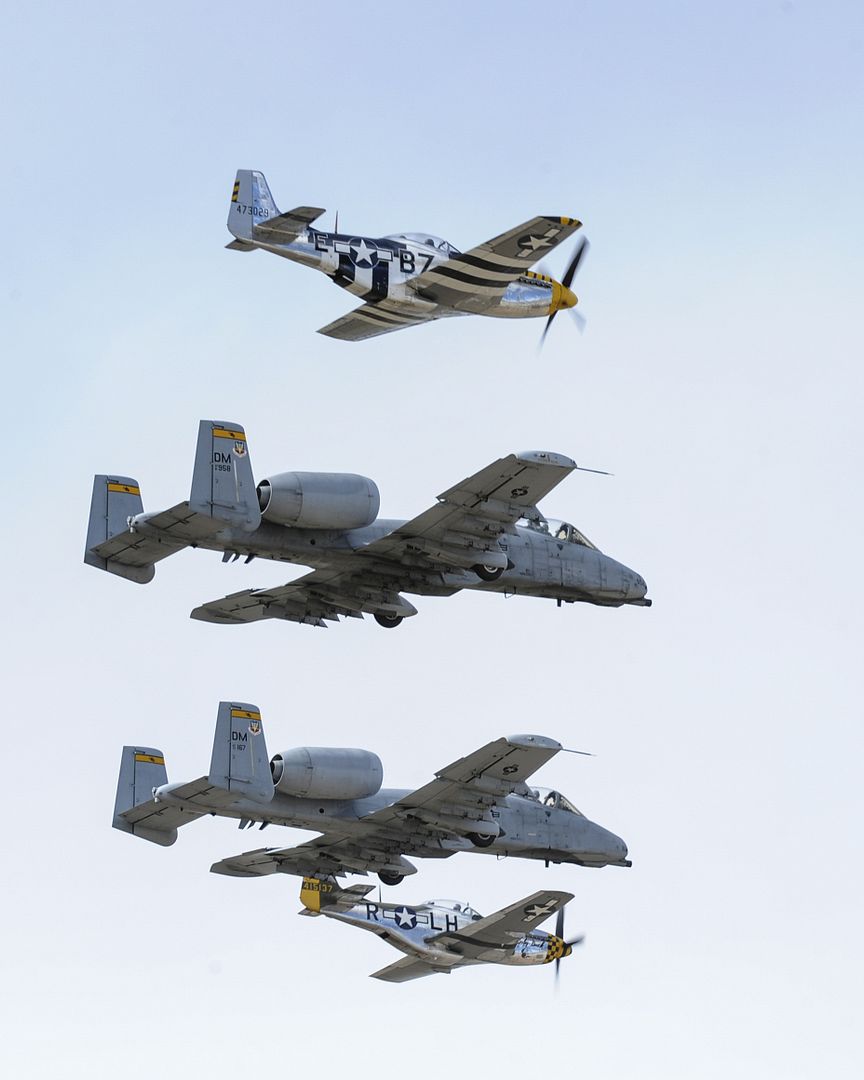
A U.S. Air Force F-22 Raptor, a F-35 Lightning II and two F-86 Sabre's fly in formation during the 2017 Heritage Flight Training and Certification Course at Davis-Monthan Air Force Base, Ariz., Feb. 12, 2017. The HFTCC provides civilian and military pilots the opportunity to practice flying in formation together in preparation for future air shows. (U.S. Air Force photo by Senior Airman Betty R. Chevalier)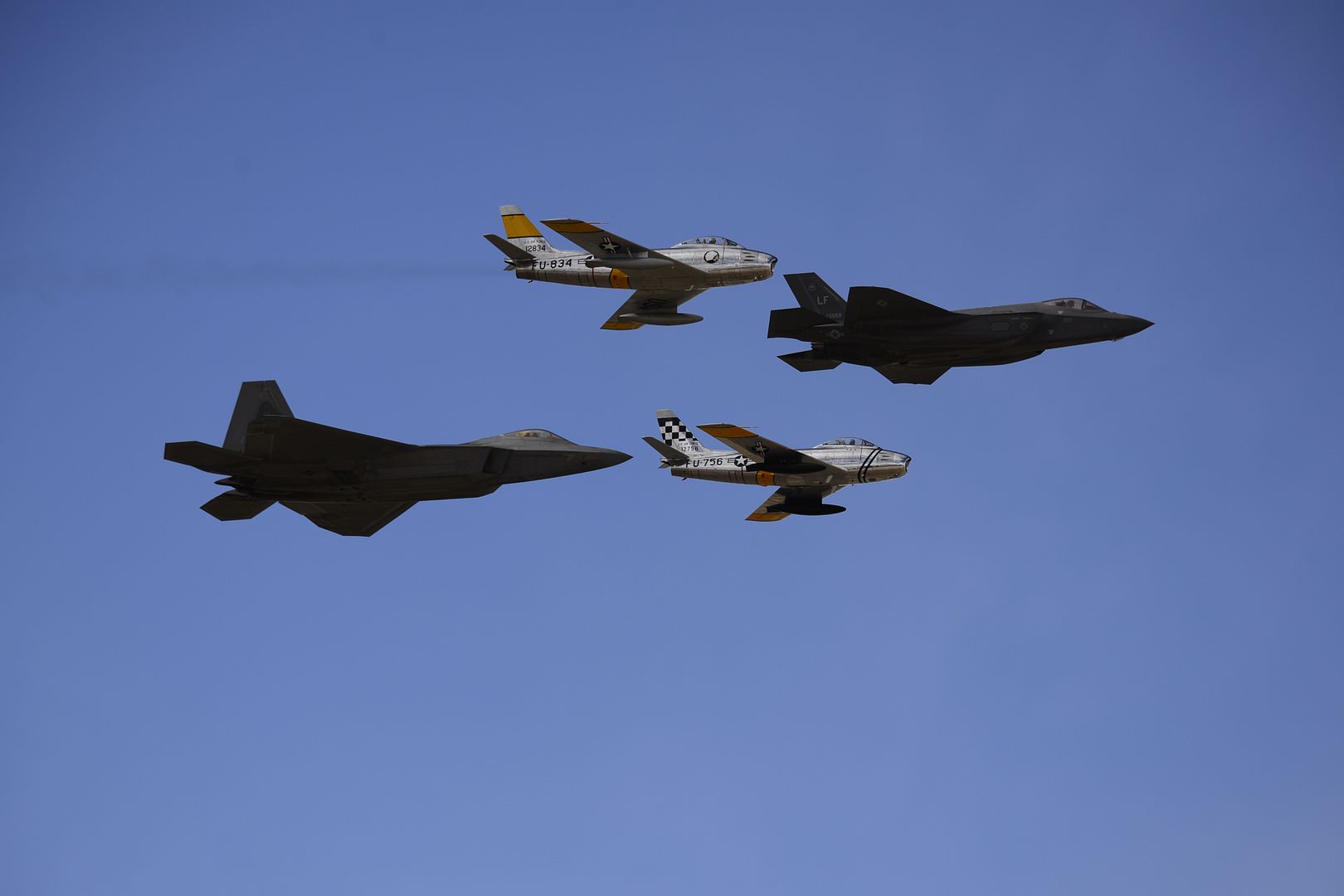
A P-51 Mustang sits on the flight line during the 2017 Heritage Flight Training and Certification Course at Davis-Monthan Air Force Base, Ariz., Feb. 12, 2017. The annual aerial demonstration training event has been held at D-M since 2001. The modern aircraft that participated in this year?s HFTCC were the F-35 Lightning II, the F-22 Raptor, F-16 Fighting Falcon and the A-10C Thunderbolt II. The historic aircraft included the P-51 and T-51 Mustangs, the P-40 Warhawk, the P-38 Lightning, the P-47 Thunderbolt, the T-33 Shooting Star and the F-86 Sabre. (U.S. Air Force photo by Senior Airman Betty R. Chevalier)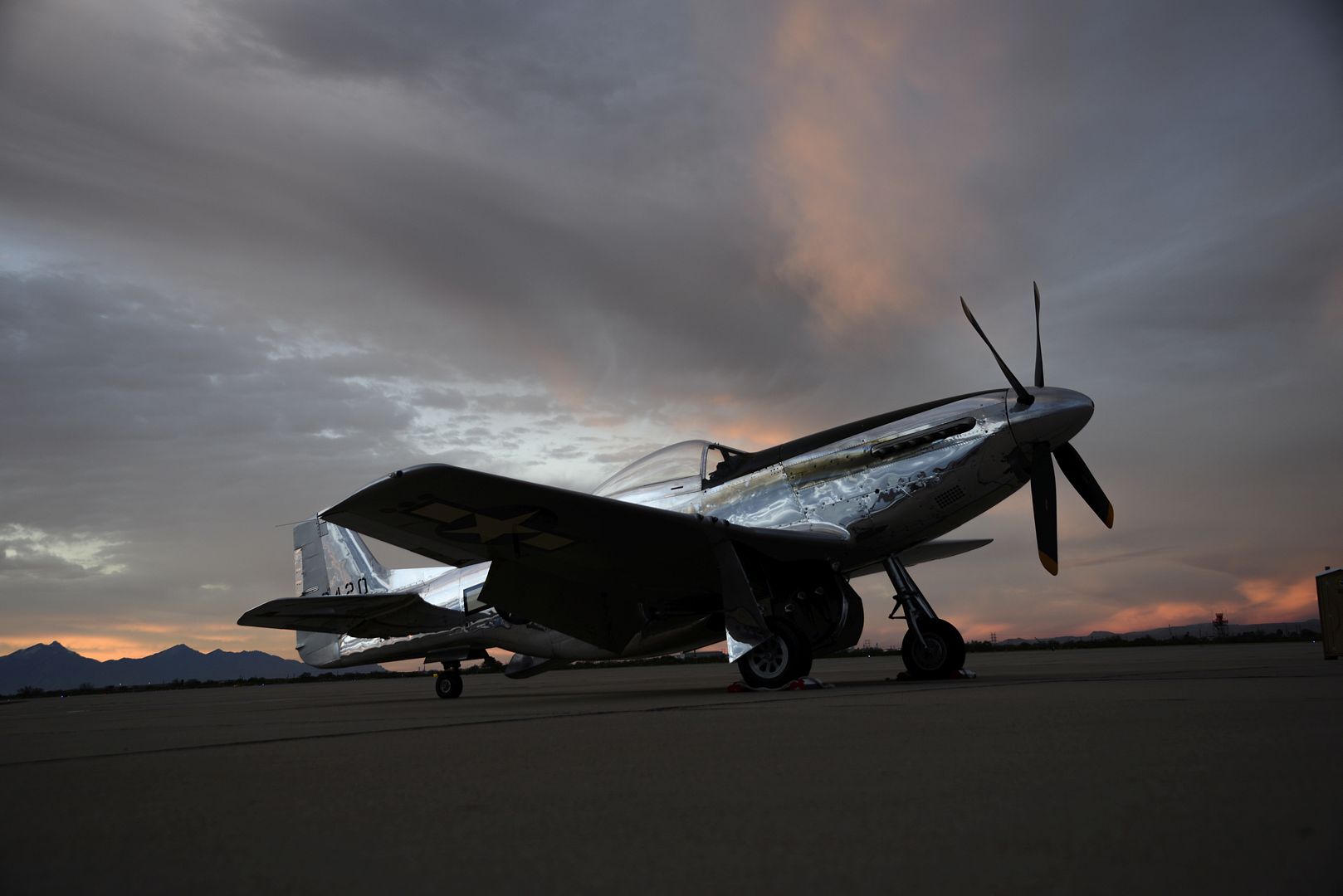
A U.S. Air Force F-35 Lightning II, two F-22 Raptors and two F-16 Fighting Falcons rests on the flightline during the 2017 Heritage Flight Training and Certification Course at Davis-Monthan Air Force Base, Ariz., Feb. 12, 2017. Established in 1997, the HFTCC certifies civilian pilots of historic military aircraft and U.S. Air Force pilots to fly in formation together during the upcoming air show season. (U.S. Air Force photo by Senior Airman Ashley N. Steffen)
-
 Main AdminTwo F-86 Sabres perform a fly over during the 2017 Heritage Flight Training and Certification Course at Davis-Monthan Air Force Base Ariz., Feb 12, 2017. During the course, aircrews practice ground and flight training to enable civilian pilots of historic military aircraft and U.S. Air Force pilots of current fighter aircraft to fly safely in formations together. (U.S. Air Force photo by Airman 1st Class Giovanni Sims)
Main AdminTwo F-86 Sabres perform a fly over during the 2017 Heritage Flight Training and Certification Course at Davis-Monthan Air Force Base Ariz., Feb 12, 2017. During the course, aircrews practice ground and flight training to enable civilian pilots of historic military aircraft and U.S. Air Force pilots of current fighter aircraft to fly safely in formations together. (U.S. Air Force photo by Airman 1st Class Giovanni Sims)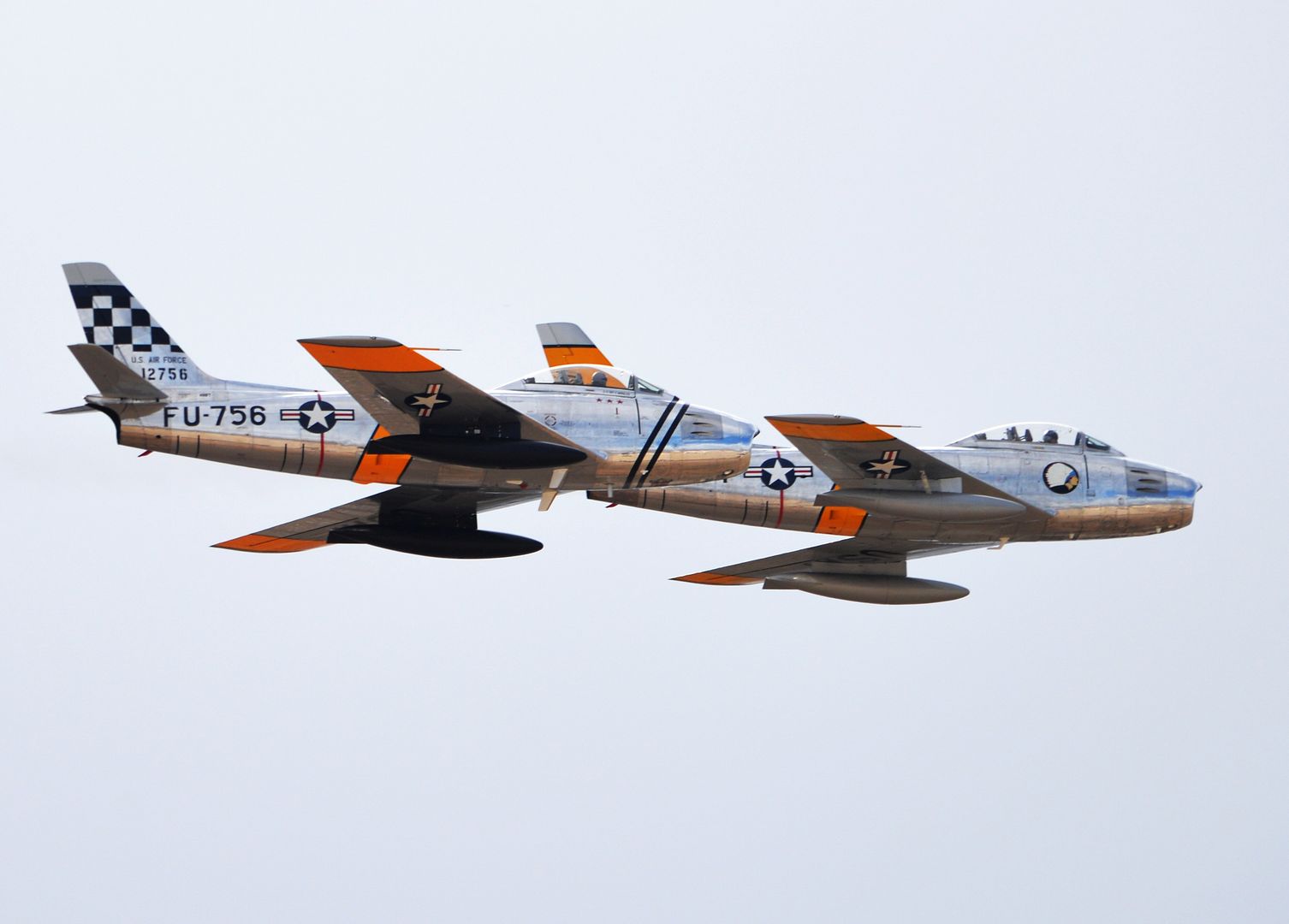
A P-51 Mustang rests on the flight line during the 2017 Heritage Flight Training and Certification Course at Davis-Monthan Air Force Base Ariz., Feb 12, 2017. The modern aircraft that participated in this year's HFTCC were the F-35 Lightning II, the F-22 Raptor, the F-16 Fighting Falcon and the A-10C Thunderbolt II. The historic aircraft included the P-51 and T-51 Mustang, the P-40 Warhawk, the P-38 Lightning, the P-47 Thunderbolt, the T-33 Shooting Star and the F-86 Sabre. (U.S. Air Force photo by Airman 1st Class Giovanni Sims)
A P-47 Thunderbolt taxis down the flight line during the 2017 Heritage Flight Training and Certification Course at Davis-Monthan Air Force Base Ariz., Feb. 12, 2017. During the course, aircrews practice ground and flight training to enable civilian pilots of historic military aircraft and U.S. Air Force pilots of current fighter aircraft to fly safely in formations together. (U.S. Air Force photo by Airman 1st Class Giovanni Sims)
A P-38 lightning taxies on the flight line during the 2017 Heritage Flight Training and Certification Course at Davis-Monthan Air Force Base, Ariz., Feb. 12, 2017. The HFTCC provides civilian and military pilots the opportunity to practice flying in formation together in preparation for future air shows. (U.S. Air Force Photo by Airman 1st Class Nathan H. Barbour)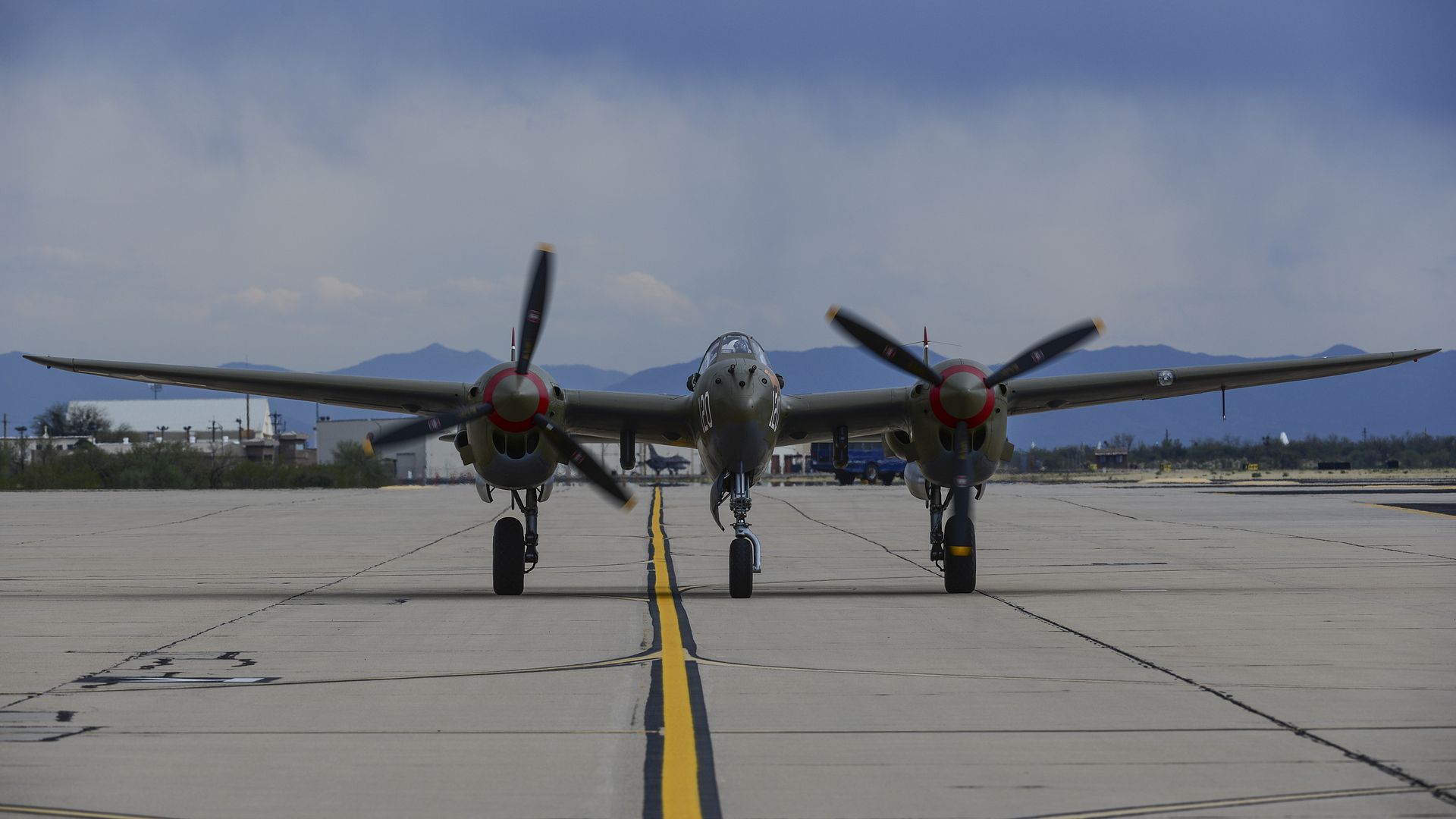
A U.S. Air Force F-22 Raptor from the 90th Fighter Squadron at Joint Base Elmendorf-Richardson, takes off at Yokota Air Base, Japan, Feb. 13, 2017. The F-22 Raptors stopped at Yokota AB before traveling on to Royal Australian Air Force Base, Tindal. As the Air Force?s Western Pacific airlift hub, Yokota supports transient aircraft as they conduct mission throughout the Indo-Asia Pacific Region. (U.S. Air Force photo by Yasuo Osakabe/Released)
MEDITERRANEAN SEA (Feb. 13, 2017) An F/A-18F Super Hornet assigned to the "Black Lions" of Strike Fighter Squadron (VFA) 213 launches from the aircraft carrier USS George H.W. Bush (CVN 77) in support of Operation Inherent Resolve. The ship's carrier strike group is conducting naval operations in the U.S. 6th Fleet area of operations in support of U.S. national security interests. (U.S. Navy photo by Mass Communication Specialist 3rd Class Christopher Gaines/Released)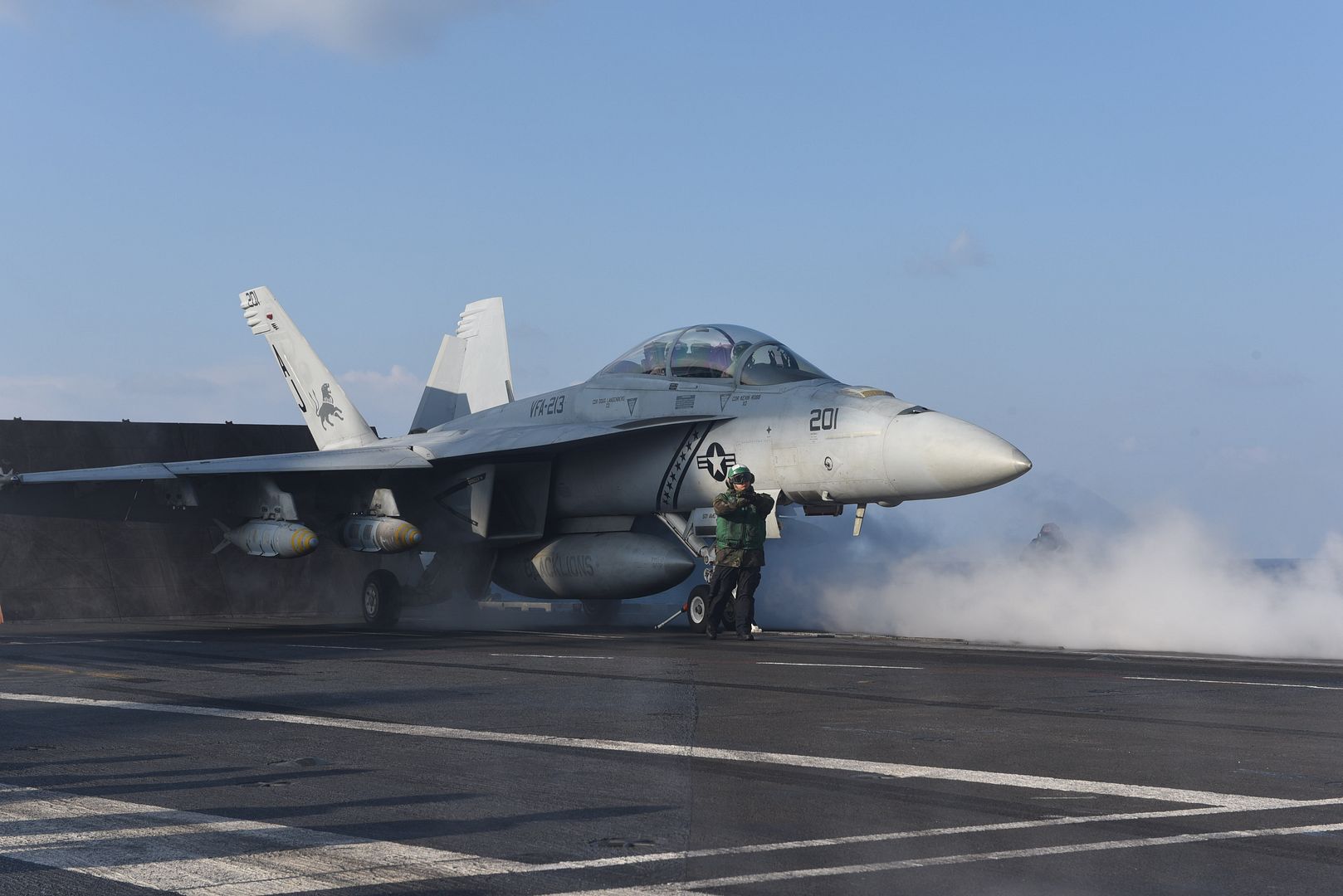
An F-22 Raptor launches a sortie in support of Combined Joint Task Force-Operation Inherent Resolve from an undisclosed location in Southwest Asia, Feb. 14, 2017. F-22s have provided close air support and precision guided strikes in an effort to weaken and destroy Islamic State in Iraq and the Levant operations in the Middle East region and around the world. (U.S. Air Force photo/Senior Airman Tyler Woodward)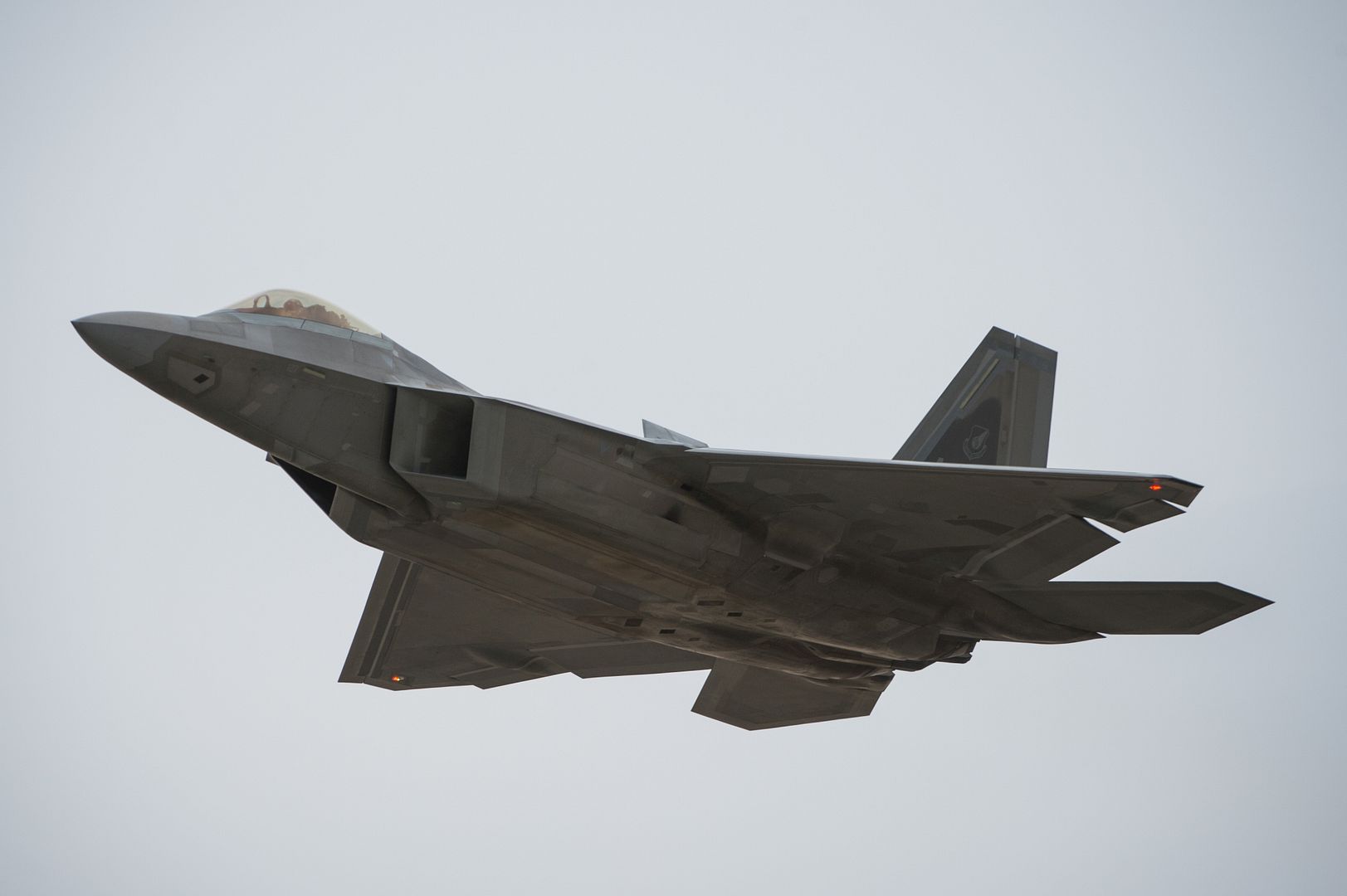
A KC-10 Extender launches a a sortie in support of Combined Joint Task Force-Operation Inherent Resolve from an undisclosed location in Southwest Asia, Feb. 14, 2017. Extenders have provided fuel to multi-national Coalition aircraft in an effort to weaken and destroy Islamic State in Iraq and the Levant operations in the Middle East region and around the world. (U.S. Air Force photo/Senior Airman Tyler Woodward)
MARIETTA, Ga., Feb. 13, 2017 /PRNewswire/ -- The 200th F-35 Center Wing Assembly (CWA) built in the Lockheed Martin (NYSE: LMT) facility here was delivered to the Fort Worth, Texas, F-35 production line in January, marking a major milestone.
The CWA is a major structural component and represents approximately one quarter of the aircraft's fuselage. The aircraft's wings are attached to the CWA during final assembly, which takes place at the Lockheed Martin facility in Fort Worth.
Since the Marietta F-35 team delivered its first CWA in September 2011, all 200 assemblies have been delivered to Fort Worth on or ahead of the final production line need dates, including 51 in 2016. The current Marietta production rate calls for one completed CWA to be delivered approximately every 3.5 manufacturing days.
Approximately 350 people are assigned to the F-35 program in Marietta. In addition to assembling the CWAs on a state-of-the art production line, technicians also apply specialized coatings to the aircraft's horizontal and vertical tail assemblies and to spare and repaired doors, panels and covers.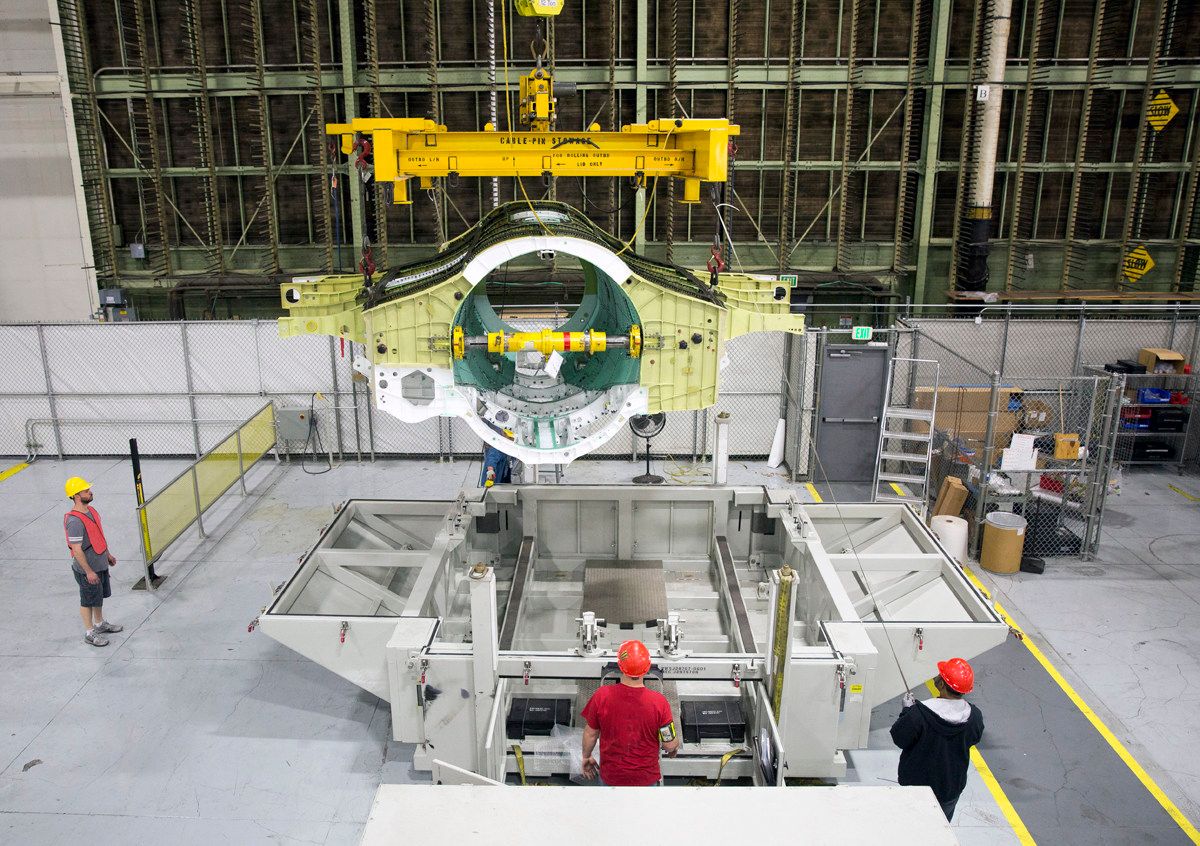
HUNTSVILLE, Ala. ? Feb. 13, 2017 ? Northrop Grumman Corporation (NYSE: NOC), in partnership with the U.S. Army Prototype Integration Facility and prime contractor Redstone Defense Systems, has successfully completed the first flight of the UH-60V Black Hawk helicopter.
Northrop Grumman provided the Integrated Avionics Suite for the UH-60V, which upgrades the U.S. Army?s UH-60L Black Hawk helicopters with a digital cockpit, under a contract awarded in 2014. The scalable, fully integrated and open architecture-based cockpit design replaces older analog gauges with digital electronic instrument displays in the upgraded aircraft. The UH-60V features one of the Army?s most advanced avionics solutions, enabling the complex missions of the army aviation warfighter.
On Jan. 19, the UH-60V Black Hawk successfully flew for the first time with this digitized cockpit in Huntsville. This important milestone was the culmination of a cockpit design and development effort that was completed on schedule within 29 months of the original contract award. The team?s accomplishment achieves the specific timeline set by Army leadership over two years prior to the first flight.
?This UH-60V first flight accomplishment reaffirms our open, safe and secure cockpit solutions that will enable the most advanced capabilities for warfighters,? said Ike Song, vice president, mission solutions, Northrop Grumman. ?We remain committed to delivering an affordable, low-risk solution that provides long-term value and flexibility to customers.?
The UH-60V digital cockpit solution is aligned with the Future Airborne Capability Environment (FACE?) standard and supports integration of off-the-shelf hardware and software, enabling rapid insertion of capabilities in multiple avionics platforms while reducing cost and risk for system integration and upgrades. The open architecture approach provides greater flexibility and enables upgrades to be done with or without the original equipment manufacturer?s involvement.
The UH-60V meets the standards for safety-critical software development and is designed to comply with the Federal Aviation Administration and European Aviation Safety Agency?s Global Air Traffic Management requirements, enabling the system to traverse military and civilian airspace worldwide. It is also certifiable and compliant with safety-critical avionics standards such as DO-178C.
The UH-60V Black Hawk program will modernize the Army?s fleet of UH?60L helicopters through cost-effective cockpit upgrades. The new system is nearly identical to the UH?60M pilot-vehicle interface, providing common training and operational employment.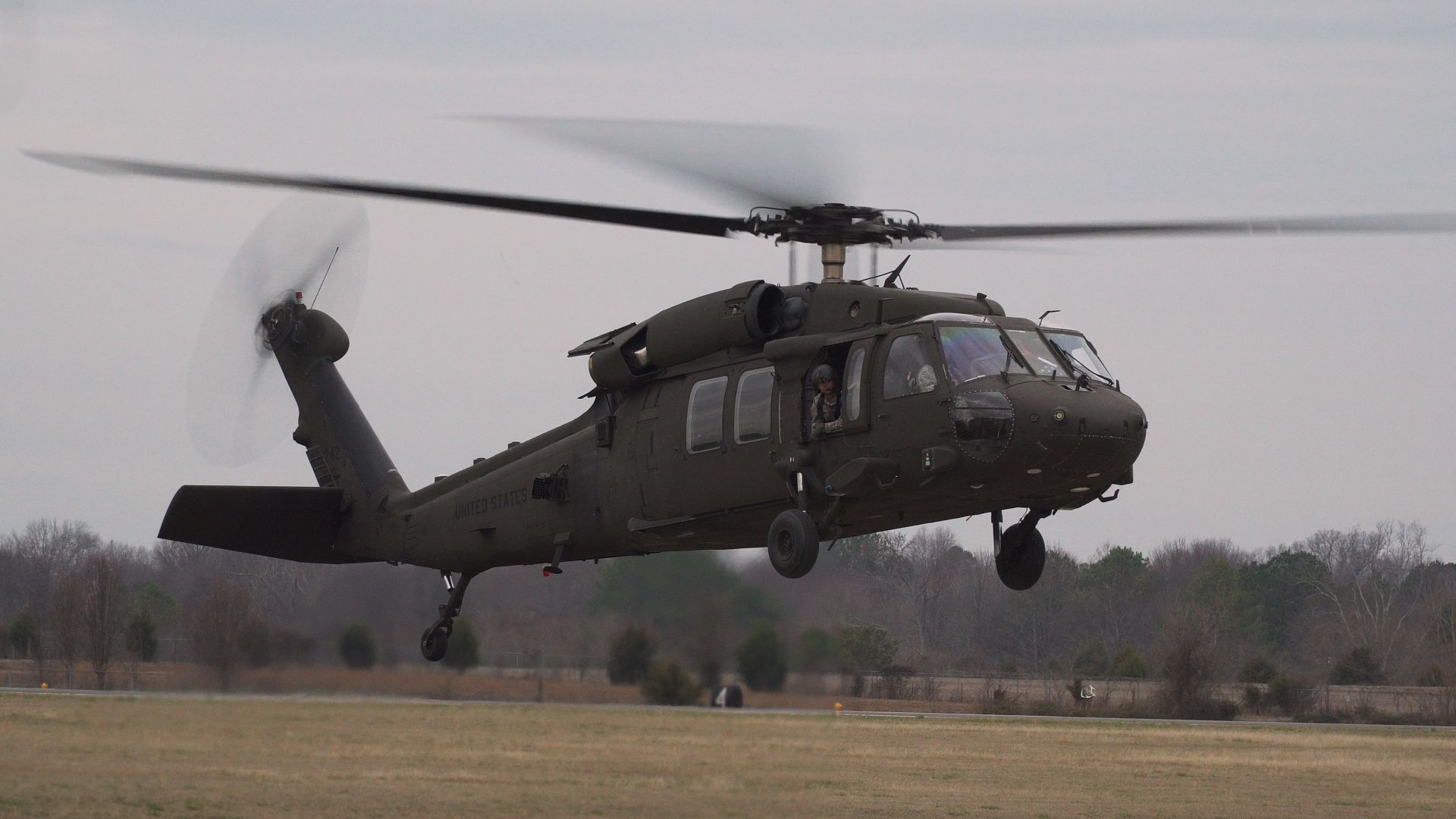
S?o Jos? dos Campos, Brazil, February 14, 2017 -Wider?e, the largest regional airline in Scandinavia, will be the first airline in the world to receive the brand-new E190-E2 jet, the first member of the E-Jets E2, the second generatio on of the E-Jets family of commercial aircraft. As the launch operator of the model, Wider?e will receive their first aircraft in the first half of 2018. Wider?e has a contract with Embraer for up to 15 E2 family jets consisting of three firm orders for the E190-E2 and purchase rights for 12 further E2 family aircraft. The order has a potential list price value of up to USD 873 million, with all orders being exercised.?The market is keen to know the identity of the E190-E2 launch operator, and we?re pleased to end that suspense on this Valentine's Day - Wider?e is the ?perfect match?. The airline has a special place in our hearts; Wider?e are proven pioneers in their field who have achieved major success and still remain hugely ambitious, similar in many ways to the path taken by Embraer?, said John Slattery, President & CEO, Embraer Commercial Aviation. ?The E2 program remains on target with technical specification guidance, on time and on budget. Our team remains focused on a successful delivery to Wider?e in the first half of next year.?? Wider?e is configuring the E190-E2s in a comfortable single-class layout with 114 seats.With the Norway?s airline order, the E-Jets E2 back log has 275 firm orders plus Lette?rs of Intent, options and purchase rights covering another 415 aircraft giving a total of 690 commitments from airlines and leasing companies.? Stein Nilsen, Chief Executive Officer of Wider?e, said, ?We are very proud we will be the first airline in the world to operate the E190-E2.Knowing the hard-work Embraer is doing in the certification ampaign, especially in terms of maturity, we have every confidence in a smooth entry into service. The E190-E2 will be a ?big leap in Wider?e?s history, and our planning for the first deliveries is now well under way."Embraer is the world?s leading manufacturer of commercial jets with up to 130+ seats. The Company has 100 customers from all over the world operating the ERJ and the E-Jet families of aircraft. For the E-Jets program alone, Embraer has logged more than 1,700 orders and over 1,300 deliveries, redefining the traditional concept of regional aircraft by operating across a range of business applications.
About Wider?eWider?e is the largest regional airline in Scandina via, with a staff of 3,000 and a turnover of NOK 4.4 billion. The company carries close to 3 million passengers annually and flies to 46 domestic and international destinations.Wider?e operates more than 450 flights every day and operates to more than twice as many airports in Norway than any other airline. Today our network consists of 60% commercial routes, and 40% PSO routes (Public Services Obligations).About EmbraerEmbraer is a global company headquartered in Brazil with businesses in commercial and executive aviation, defense & security. The company designs, develops, manufactures and markets aircraft and systems, providing customer support and services.Since it was founded in 1969, Embraer has delivered more than 8,000 aircraft. About every 10 seconds an aircraft manufactured by Embraer takes off somewhere in the world, transporting over 145 million passengers a year.Embraer is the leading manufacturer of commercial jets up to 130 seats. The company maintains industrial units, offices, service and parts distribution centers, among other activities, across the Americas, Africa, Asia and Europe.?
UK Minister for Defence Procurement shows support to Indo-UK Advanced Hawk
14 February 2017
After seeing at first hand the capabilities the Advanced Hawk offers, the Minister said: ?The UK and India have so much to offer one another in defence and I?m delighted to be at Aero India to build this close relationship.
The joint development of the Advanced Hawk by BAE Systems and Hindustan Aeronautics Limited is an outstanding example of what our defence industries can achieve together.
Indian companies like HAL have been building UK-designed aircraft for over 40 years, so we are building on a strong foundation.
Alan Garwood, Group Business Development Director, BAE Systems, added: ?The Advanced Hawk is another demonstration of our commitment to Make-in-India and presents a unique opportunity to build on our track record of collaboration with HAL and Indian industry in developing technologies and capabilities. Advanced Hawk is a great example of Make in India, for India and Export from India."
Building on the success of the Hawk Mk132, which recently completed 100,000 flying hours with the Indian Air Force and the Indian Navy, the new features of the Advanced Hawk enable training activities currently performed on frontline fighter aircraft to be undertaken on the updated air platform.
The Advanced Hawk will reduce training demands on more expensive frontline aircraft, creating additional capacity for operational tasks, whilst delivering fast jet training in a more cost-effective, structured and safer environment. High commonality with the existing Hawk production and support infrastructure in India enables the Advanced Hawk to be manufactured and supported with maximum reuse of facilities, equipment and skills.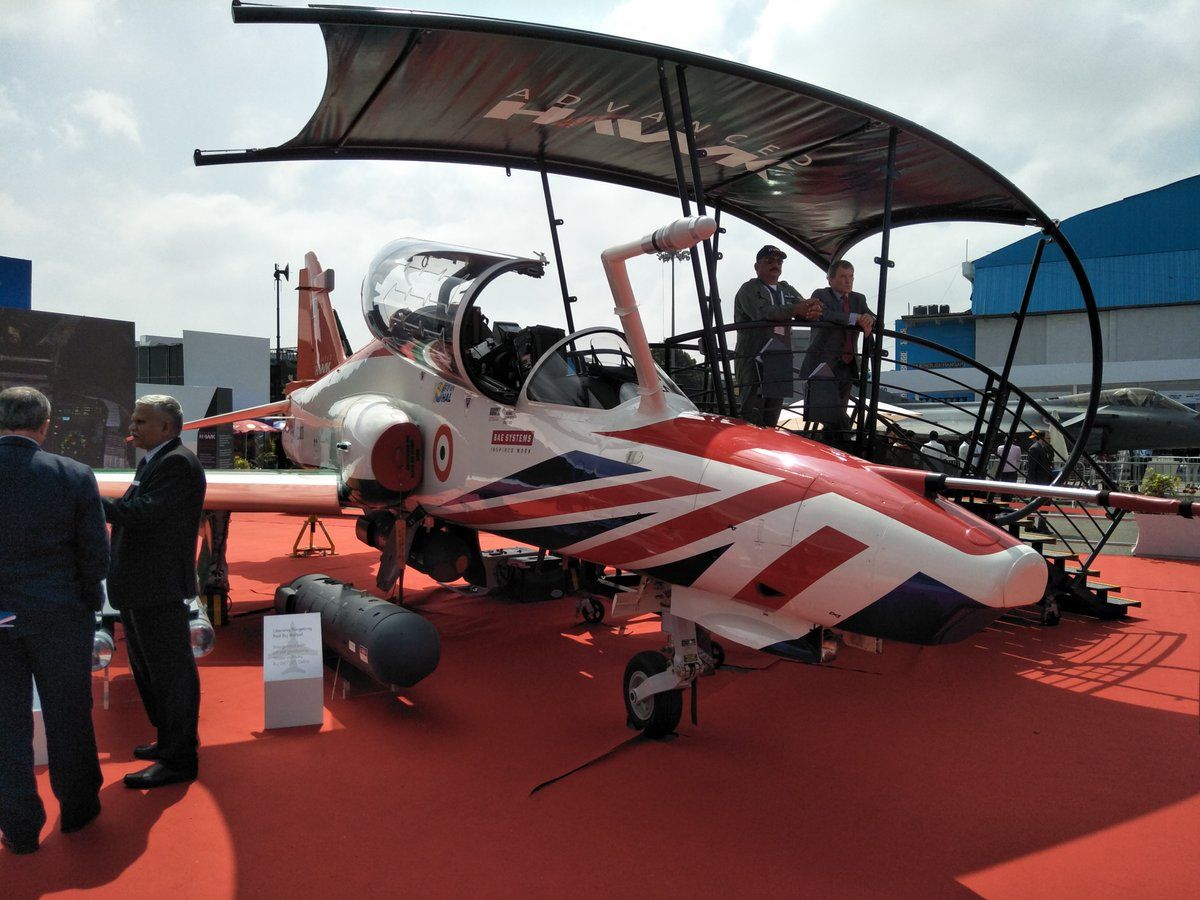
-
 Main AdminMEDITERRANEAN SEA (Feb. 13, 2017) An F/A-18F Super Hornet attached to the Black Lions of Strike Fighter Squadron (VFA) 213 launches from the aircraft carrier USS George H.W. Bush (CVN 77). The George H.W. Bush Carrier Strike Group is conducting naval operations in the U.S. 6th Fleet area of operations in support of U.S. national security interests. (U.S. Navy photo by Mass Communication Specialist 3rd Class Christopher Gaines/Released)
Main AdminMEDITERRANEAN SEA (Feb. 13, 2017) An F/A-18F Super Hornet attached to the Black Lions of Strike Fighter Squadron (VFA) 213 launches from the aircraft carrier USS George H.W. Bush (CVN 77). The George H.W. Bush Carrier Strike Group is conducting naval operations in the U.S. 6th Fleet area of operations in support of U.S. national security interests. (U.S. Navy photo by Mass Communication Specialist 3rd Class Christopher Gaines/Released)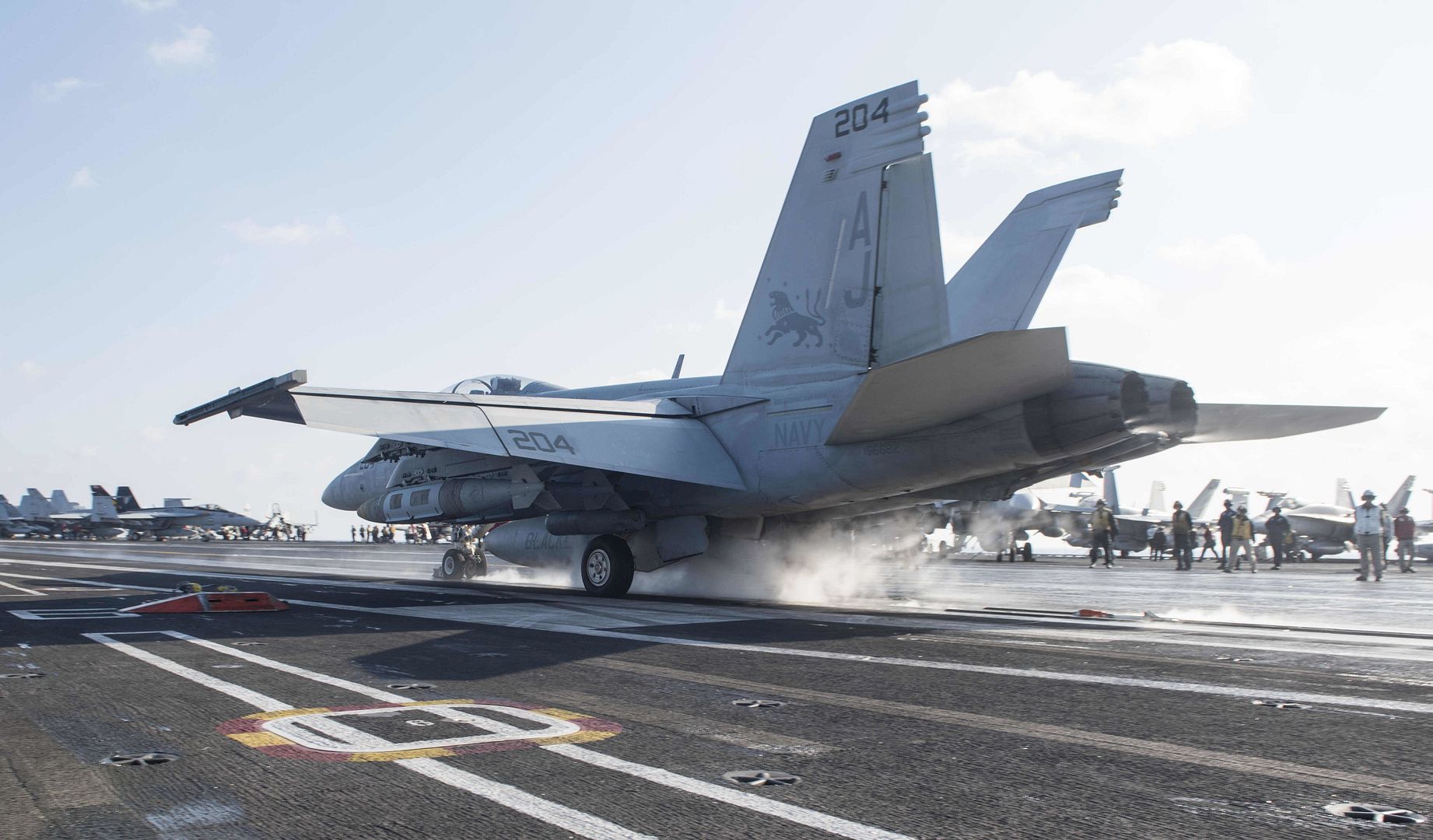
MEDITERRANEAN SEA (Feb. 13, 2017) An E-2C Hawkeye early warning and control aircraft assigned to the "Bear Aces" of Carrier Airborne Early Warning Squadron (VAW) 124 prepares to launch from the aircraft carrier USS George H.W. Bush (CVN 77). The ship's carrier strike group is conducting naval operations in the U.S. 6th Fleet areas of operation in support of U.S. national security interests. (U.S. Navy photo by Mass Communication Specialist 3rd Class Christopher Gaines/Released)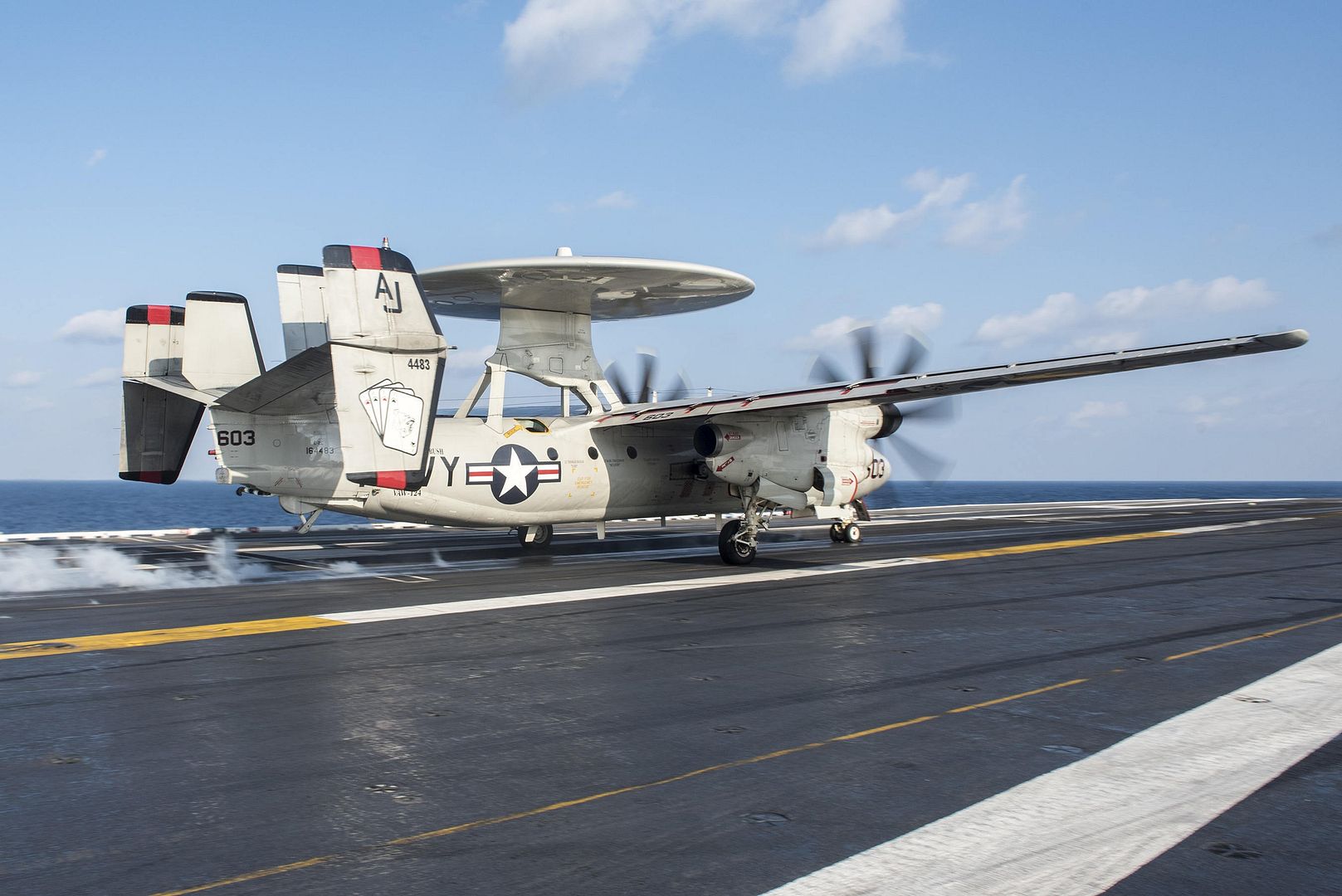
-
 Main AdminA KA-1 assigned to the 237th Tactical Control Squadron from Seoul Air Base takes off during Buddy Wing 17-3 at Osan Air Base, Republic of Korea, Feb. 14, 2017. Buddy Wing exercises are held throughout the year at different air bases across the ROK, bringing together different elements of U.S. and ROK air force assets for bi-lateral training and the exchange of skills. (U.S. Air Force photo by Staff Sgt. Victor J. Caputo)
Main AdminA KA-1 assigned to the 237th Tactical Control Squadron from Seoul Air Base takes off during Buddy Wing 17-3 at Osan Air Base, Republic of Korea, Feb. 14, 2017. Buddy Wing exercises are held throughout the year at different air bases across the ROK, bringing together different elements of U.S. and ROK air force assets for bi-lateral training and the exchange of skills. (U.S. Air Force photo by Staff Sgt. Victor J. Caputo)
An F-35 flight simulator sits dormant during a media event at Marine Corps Air Station Iwakuni, Japan, Feb. 15, 2017. The media event was put together as an opportunity for local Japanese reporters to get a first-hand look at how the simulators train pilots and enhance readiness. The simulators increase safety, proficiency and allow pilots to dynamically train without placing additional mechanical stress on the aircraft leading to safer flights. (U.S. Marine Corps photo's by Lance Cpl. Joseph Abrego)

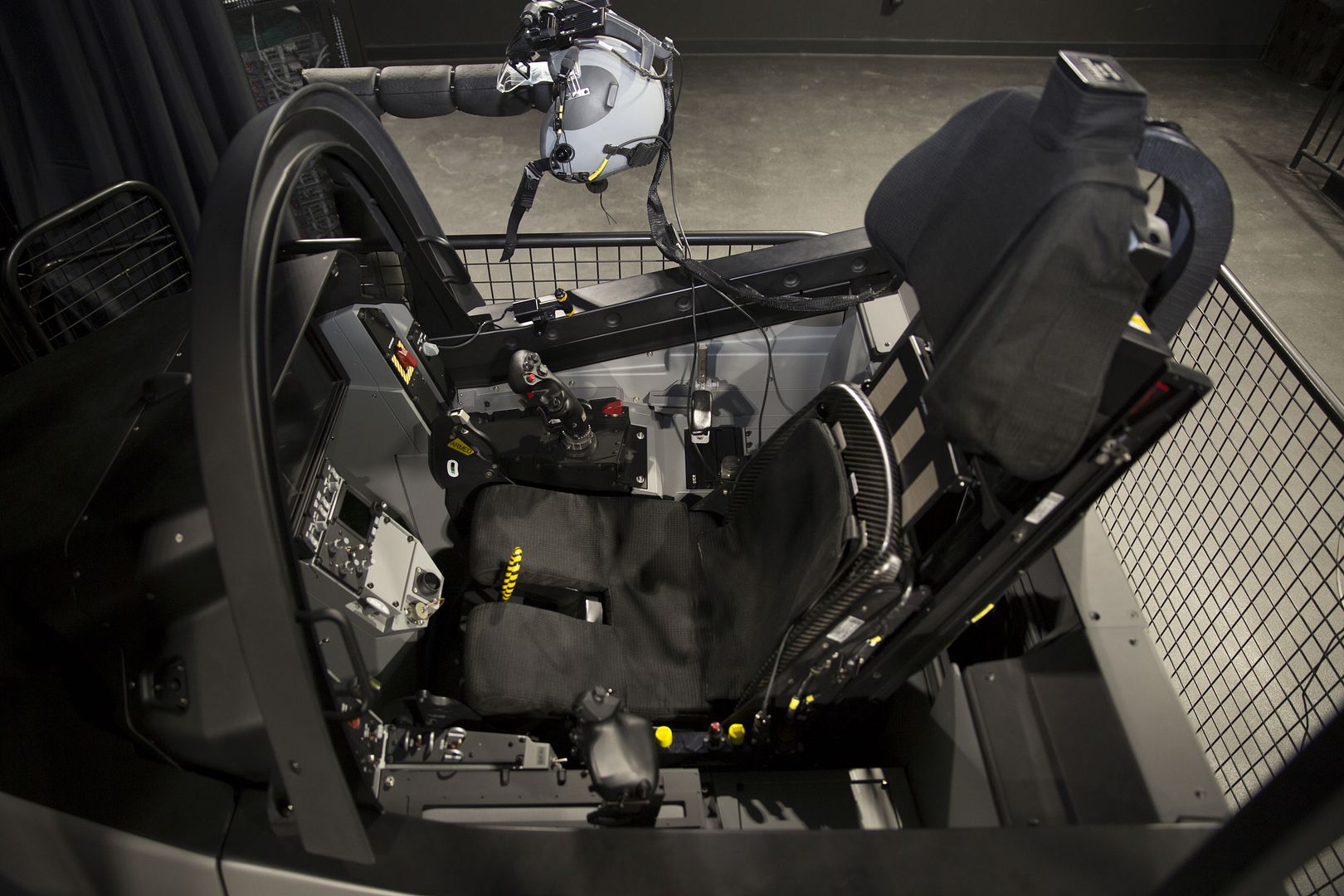
A B-1B Lancer from Andersen Air Force Base, Guam, and an F/A-18E Super Hornet assigned to the "Golden Dragons" of Strike Squadron (VFA) 192 fly over the aircraft carrier USS Carl Vinson (CVN 70). The B-1 is deployed in support of U.S. Pacific Command's Continuous Bomber Presence (CBP) mission. In place since 2004, the CBP missions are conducted by U.S. Air Force bombers such as the B-1, B-52 Stratofortress and B-2 Spirit in order to provide non-stop stability and security in the Indo-Asia-Pacific region. The Carl Vinson Carrier Strike Group is on a western Pacific deployment as part of the U.S. Pacific Fleet-led initiative to extend the command and control functions of U.S. 3rd Fleet. U.S. Navy photo by Lt. Robert Nordlund (Released)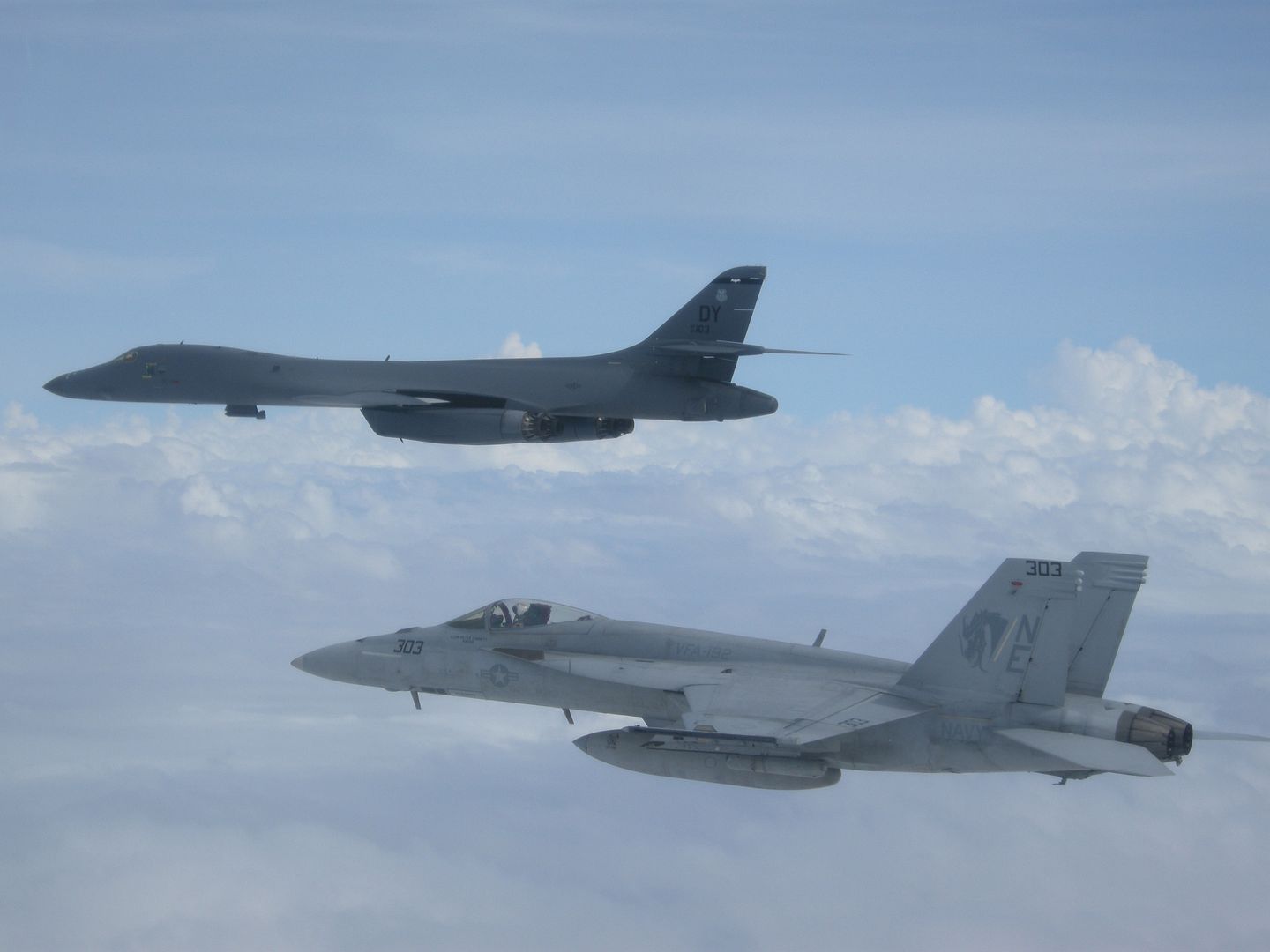
16 February 2017 Press Release
Air India has become the latest A320neo operator after taking delivery of the first of 14 aircraft leased from Kuwait headquartered ALAFCO Aviation Lease And Finance Company, becoming the first CFM powered NEO operator in India. The delivery is also the first NEO for ALAFCO from an order for 85 A320neo Family. The A320neo will join Air India?s existing fleet of 66 A320 Family aircraft.
Through a network of over 45 Indian suppliers, more than 6,000 professionals in India contribute directly and indirectly to all Airbus programmes and every aircraft produced today is partly made in India. The A320neo Family incorporates latest technologies including new generation engines and wing tip devices, which together deliver more than 15 percent in fuel savings from day one and 20 percent by 2020.
The A320neo Family is the world?s best-selling single aisle product line with over 5,000 orders from 92 customers since its launch in 2010 capturing almost 60 percent share of the market. Thanks to their widest cabin, all members of the A320neo Family offer unmatched comfort in all classes and Airbus? 18? wide seats in economy as standard. To date over 70 A320neo have been delivered to 18 customers.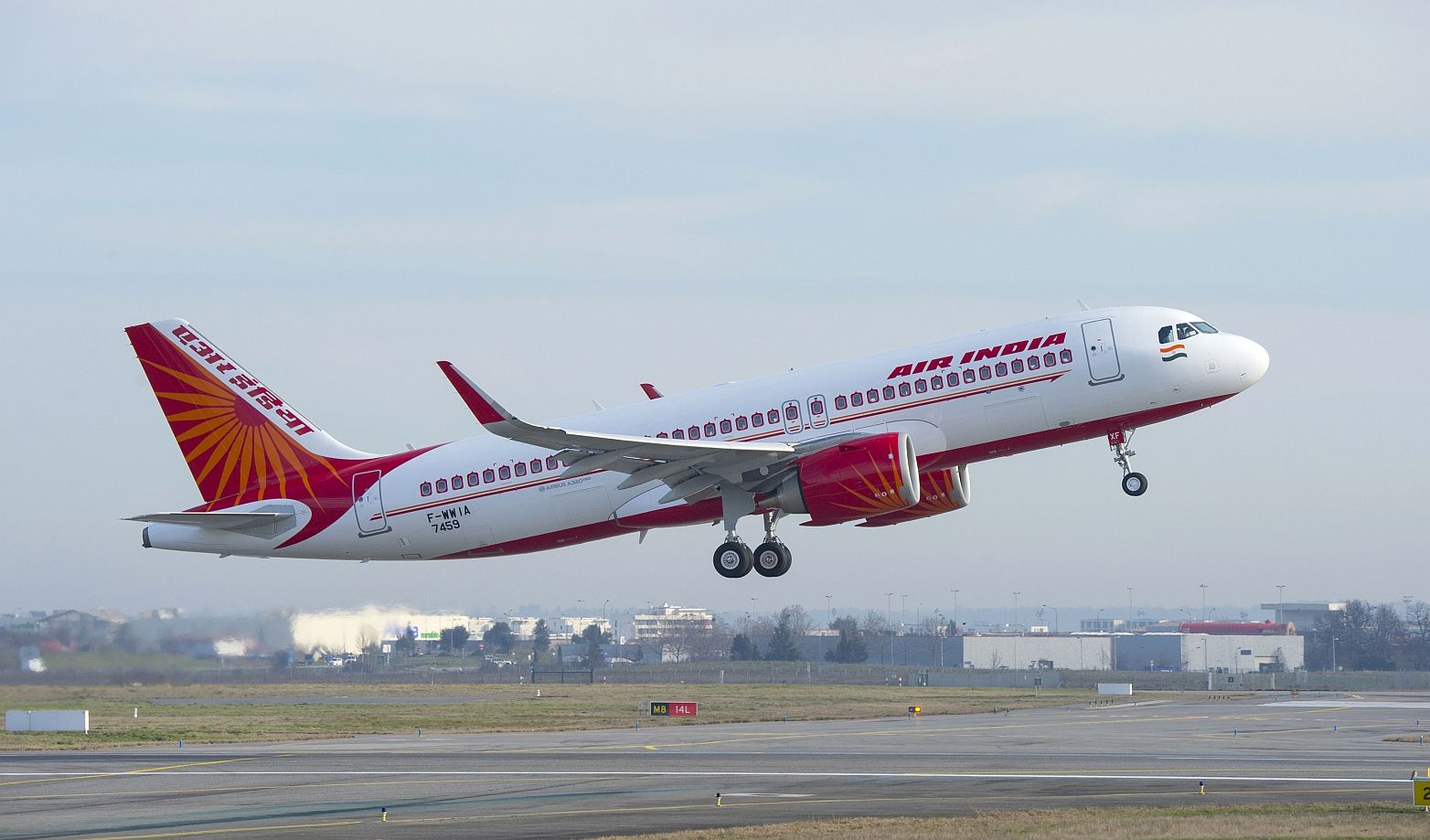
LONDON ? Feb. 15, 2017 ? Northrop Grumman Corporation (NYSE: NOC) and the Royal Air Force (RAF) have successfully completed a communications interoperability trial involving both F-35B Lightning II and Typhoon FGR4 aircraft, via an Airborne Gateway developed by Northrop Grumman.
The two-week trial, named Babel Fish III, funded by the Ministry of Defence (MOD), was recently conducted in airspace above the upper Mojave Desert, California, as part of the RAF?s Exercise High Rider.
During the trial, the Northrop Grumman Airborne Gateway connected the fifth-generation F-35B, which communicates using the stealthy Multifunction Advanced Data Link (MADL), and the fourth-generation Typhoon, by translating MADL messages to Link 16 format. Link 16 is the U.S. and NATO military tactical data link used by some military aircraft, ships and ground forces to communicate and exchange tactical data. The F-35 and the Typhoon can communicate directly via Link 16 but previously could not communicate or share certain fifth-generation information.
This is the first time non-U.S. fifth- and fourth-generation aircraft have shared MADL delivered data and is an important demonstration of interoperability as the UK moves closer to initial operating capability of its F-35 Lightning II Force in late 2018.
?Being able to network sensor data between fifth-generation and fourth-generation fast-jets and other battlespace assets in a stealthy manner is critically important to enabling the full capability offered by fifth-generation aircraft,? said Andrew Tyler, chief executive, Northrop Grumman Europe. ?We are pleased to have played our part in this successful trial, the output of which will help the MOD to broaden its understanding of the effect that can be generated by its fifth-generation combat-air fleet.?
?I have been enormously impressed both by the collegiate effort to make the Babel Fish III trial happen so successfully, and the specific outcomes of the trial,? said Air Commodore Linc Taylor, Senior Responsible Owner, for the UK?s F-35 Programme. ?This marks another great step forward in interoperability between our fourth- and fifth- generation aircraft, putting the RAF at the forefront of this work. We plan to continue to understand and develop where the most capability and interoperability benefit lies through a series of future trials along similar lines.?
Bridging this fifth-to-fourth generation platform interoperability gap was made possible by the inclusion of a Northrop Grumman Freedom 550? software-defined radio in the Airborne Gateway. The Freedom 550? is derived from the integrated communications, navigation and identification avionics suite the company developed and manufactures for the F-35; it was validated under the Jetpack Joint Capability Technology Demonstration programme, an effort sponsored by the Office of the Secretary of Defense and U.S. Air Force that concluded in 2014.
Northrop Grumman?s Airborne Gateway translates and relays information from various sources across diverse platforms and domains to enhance interoperability, situational awareness, communications and coordination for warfighters in the air, on the ground and at sea. The system is derived from the combat-proven airborne communications node that Northrop Grumman provides to the U.S. Air Force.
Northrop Grumman deployed a similar Airborne Gateway capability in March 2016 to support Australia?s Exercise Jericho Dawn 16-3, successfully demonstrating the powerful effects of integrated air and land operations during this live-fire exercise.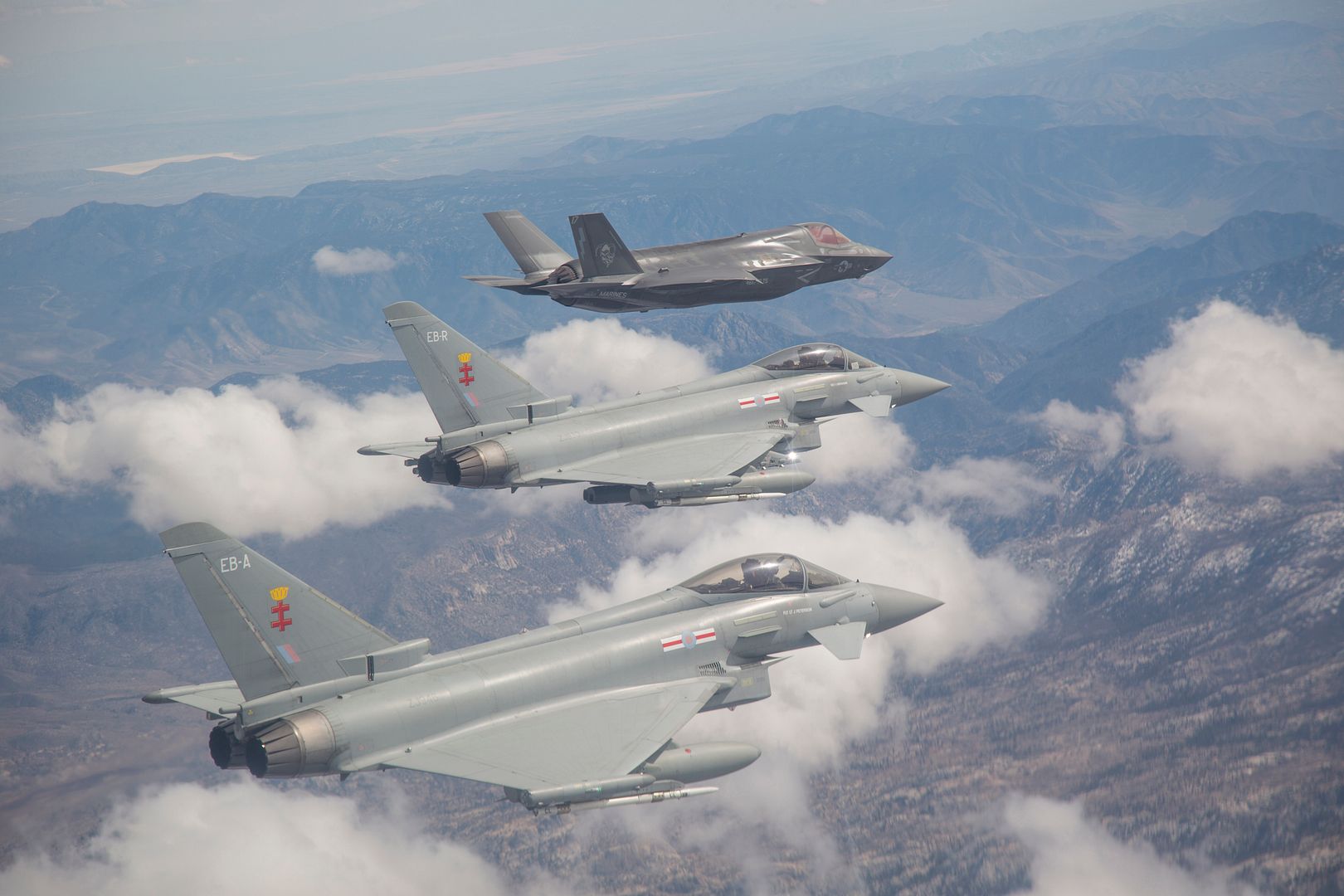
-
 Main AdminA U.S. Air Force 492nd Fighter Squadron F-15E Strike Eagle takes off from Royal Air Force Lakenheath, England, Feb. 15, 2017. The 492nd trains regularly to ensure RAF Lakenheath brings unique air combat capabilities to the fight. (U.S. Air Force photo by Tech. Sgt. Matthew Plew)
Main AdminA U.S. Air Force 492nd Fighter Squadron F-15E Strike Eagle takes off from Royal Air Force Lakenheath, England, Feb. 15, 2017. The 492nd trains regularly to ensure RAF Lakenheath brings unique air combat capabilities to the fight. (U.S. Air Force photo by Tech. Sgt. Matthew Plew)
A U.S. Air Force 494th Fighter Squadron F-15E Strike Eagle lands at Royal Air Force Lakenheath, England, Feb. 15, 2017. The 494th trains regularly to ensure RAF Lakenheath brings unique air combat capabilities to the fight. (U.S. Air Force photo by Tech. Sgt. Matthew Plew)
A U.S. Air Force C-130J Super Hercules assigned to the 143rd Airlift Wing, Rhode Island Air National Guard, taxies to its parking location following a joint U.S. and India Special Forces combined free-fall jump during Aero India 2017 at Air Force Station Yelahanka, Bengaluru, India, Feb. 15, 2017. The jump was one of the highlights of the tradeshow that demonstrates the U.S. commitment to the security of the Indo-Asia-Pacific region, promotes the standardization and interoperability of equipment, and displays capabilities critical to the success of current and future military operations. (U.S. Air Force photo by Capt. Mark Lazane)
BEALETON, Va. (Feb. 15, 2017) A UH-1 Huey equipped with an Office of Naval Research-funded Autonomous Aerial Cargo/Utility System (AACUS) sensor suite makes an approach for landing during integrated flight testing at the Flying Circus Aerodrome located in Bealeton, Va. The AACUS program is developing an innovative capability that when installed in existing rotary-wing aircraft enables autonomous flight, obstacle avoidance, approaches, landings and takeoffs to and from unprepared landing sites. (U.S. Navy photo by John F. Williams/Released)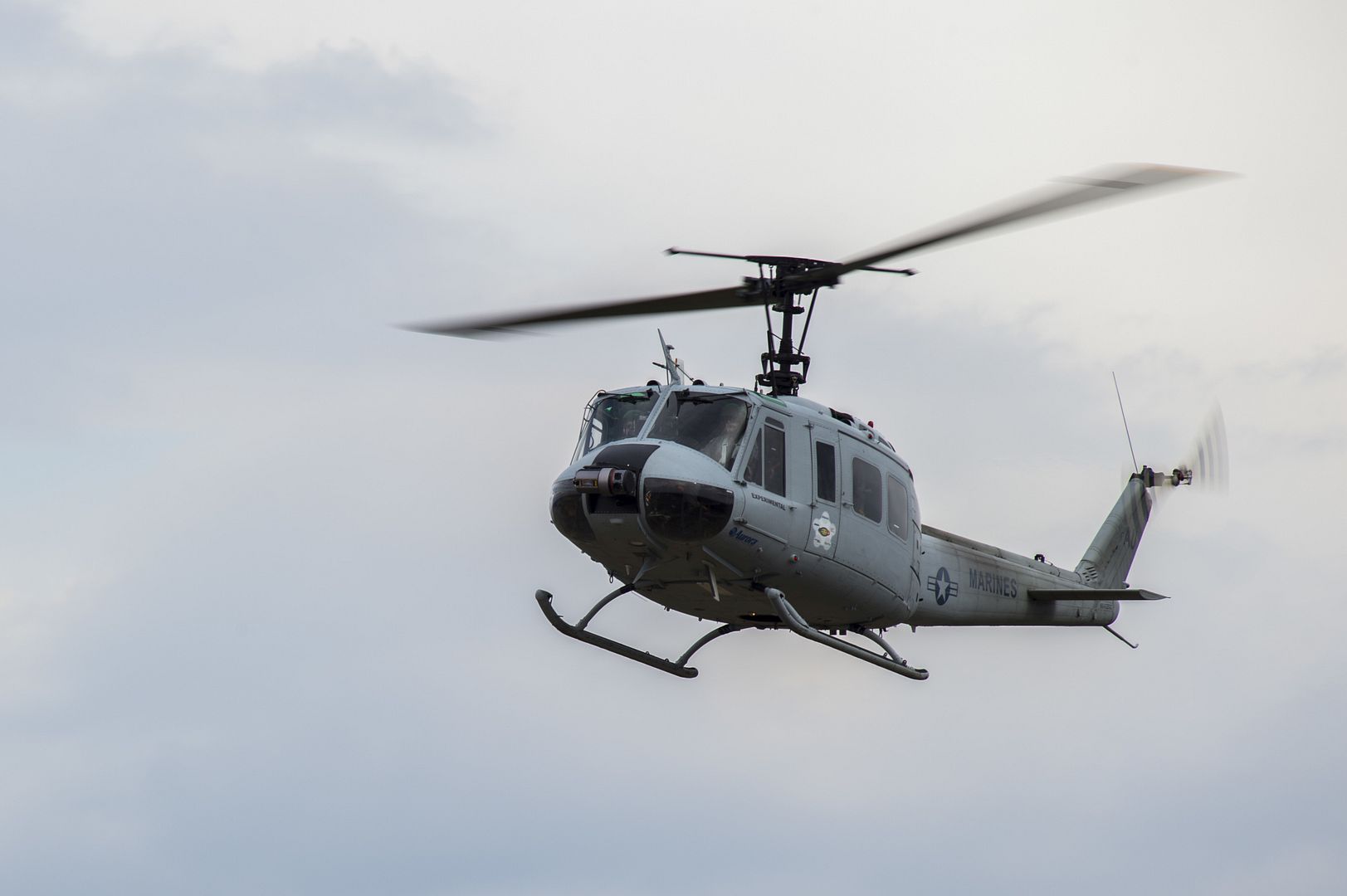
BEALETON, Va. (Feb. 15, 2017) A UH-1 Huey equipped with an Office of Naval Research-funded Autonomous Aerial Cargo/Utility System (AACUS) sensor suite conducts integrated flight testing at the Flying Circus Aerodrome located in Bealeton, Va. The AACUS program is developing an innovative capability that when installed in existing rotary-wing aircraft enables autonomous flight, obstacle avoidance, approaches, landings and takeoffs to and from unprepared landing sites. (U.S. Navy photo by John F. Williams/Released)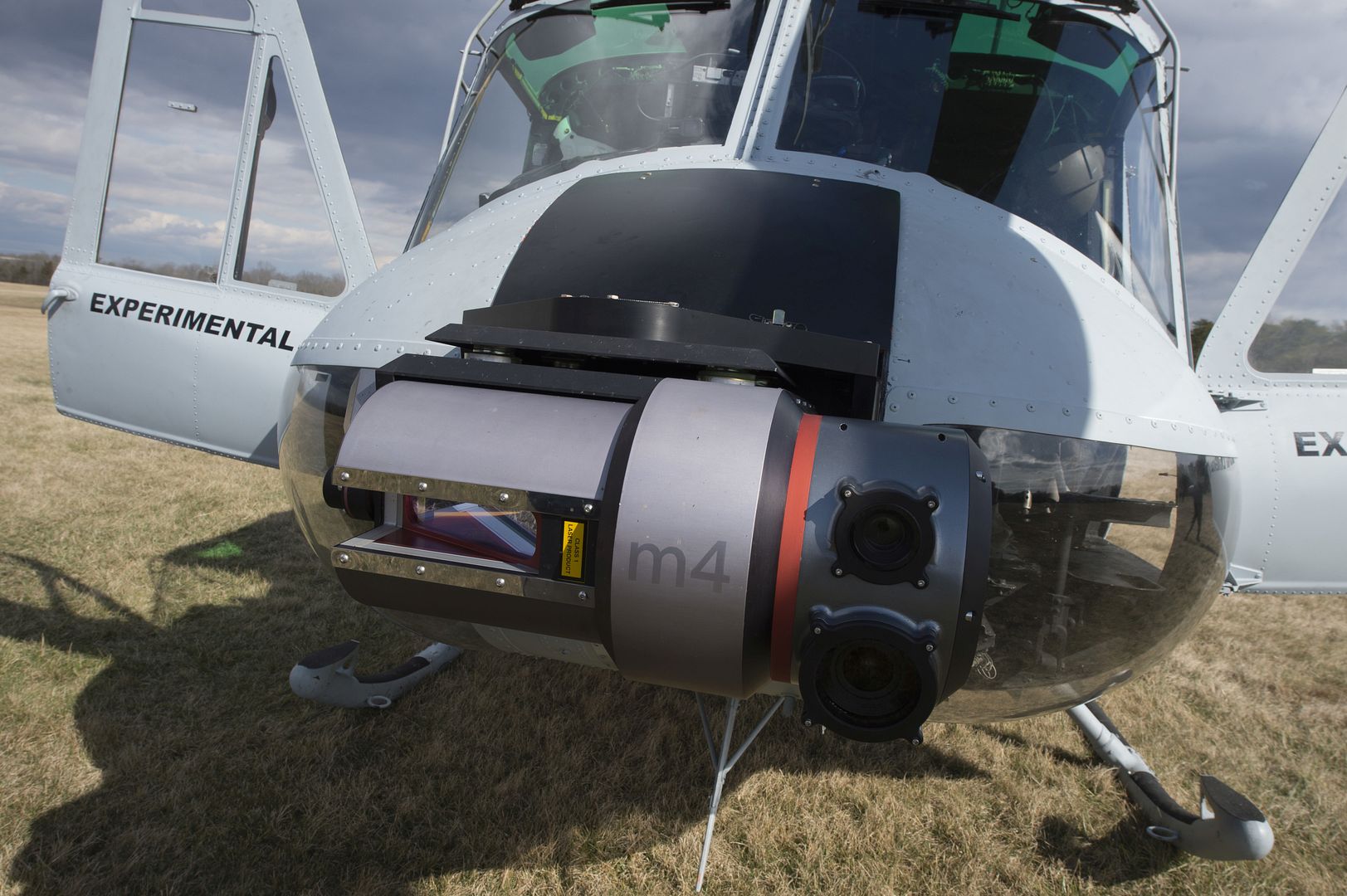
A C-5M Super Galaxy from Travis Air Force Base, Calif., takes off during a training flight, Feb. 16, 2017. (U.S. Air Force photo/Louis Briscese)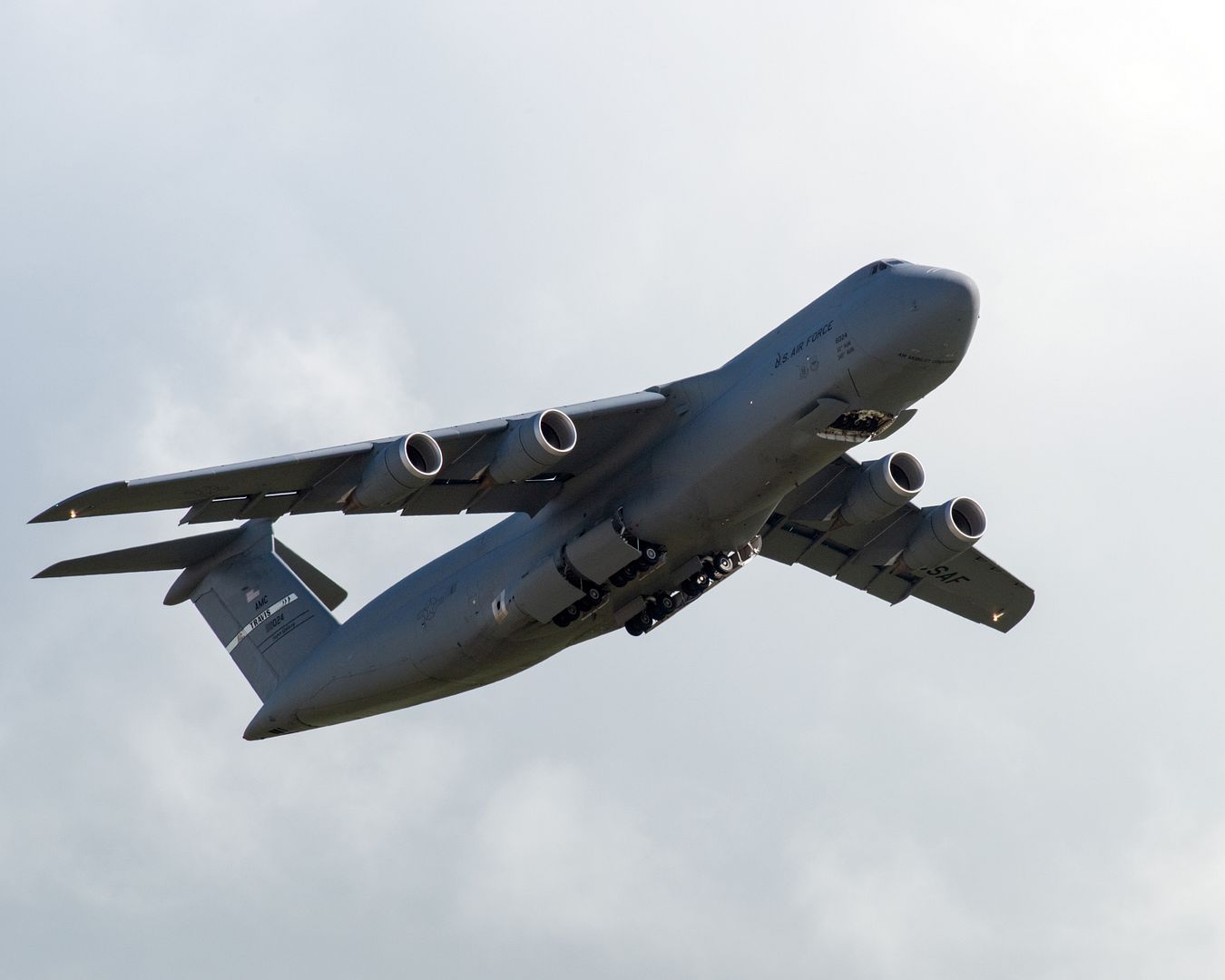
U.S. Air Force B-1B Lancers assigned to the 9th Expeditionary Bomb Squadron depart from the boom pod of a KC-135 Stratotanker after receiving an in-flight refuel during Cope North 2017, Feb. 16, 2017. The exercise includes 22 total flying units and more than 1,700 personnel from three countries and continues the growth of strong, interoperable relationships within the Indo-Asia-Pacific region through integration of airborne and land-based command and control assets. (U.S. Air Force photo by Senior Airman Keith James)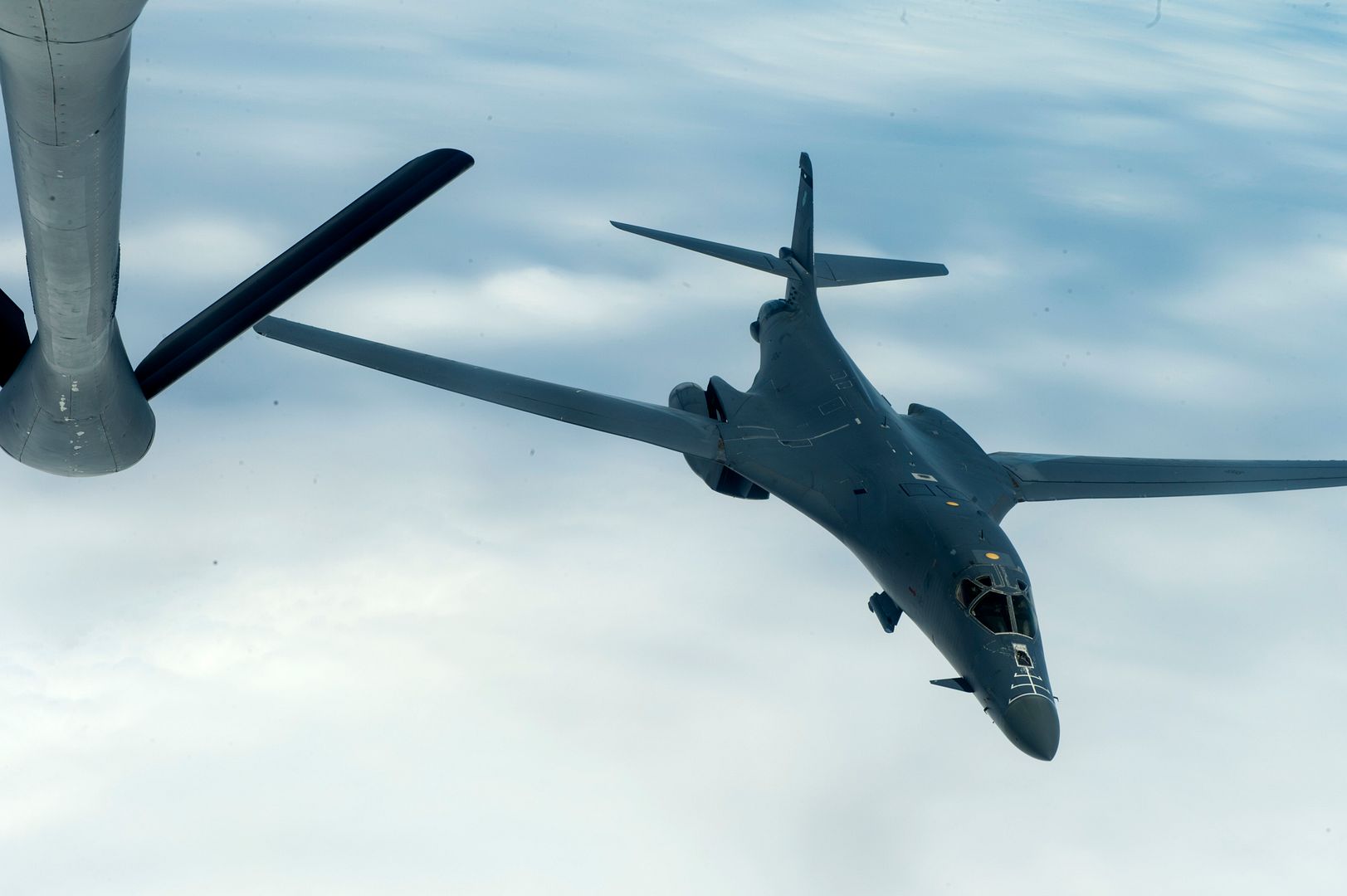
SHANGHAI, Feb. 16, 2017 /PRNewswire/ -- Boeing [NYSE: BA] and Juneyao Airlines announced today the finalization of an order for five 787-9 Dreamliners, valued at about $1.32 billion at current list prices.
This new order, which also includes options for five more 787-9s, represents the Shanghai-based private airline's first Boeing order and first widebody airplane order.
"Our strategic vision is to develop into an international airline that provides high quality service with an extended network, while ensuring excellent profitability," said Wang Junjin, Chairman, Juneyao Airlines. "Today's order is set to play a key role in our growing business in the years to come, and we look forward to continuing our relationship with Boeing into the future."
Juneyao Airlines, one of China's largest private carriers, was founded in 2005 and started operation in 2006. It currently operates domestic routes and short-haul international flights to neighboring countries such as Japan, South Korea and Thailand. The carrier plans to open new routes to North America, Europe and Australia by 2020.
"We are pleased to welcome Juneyao Airlines as a new Boeing customer," said Rick Anderson, vice president of Sales for Northeast Asia, Boeing Commercial Airplanes. "This order is an endorsement of their confidence in the 787 Dreamliner, which is the first choice for many single-aisle operators to start widebody operations."
The 787-9 Dreamliner will deliver unmatched fuel efficiency to Juneyao Airlines, keeping the carrier competitive in this challenging economic environment. The 787-9 leverages the visionary design of the 787-8, offering passenger pleasing features such as large, dimmable windows, large stow bins, modern LED lighting, higher humidity, a lower cabin altitude, cleaner air and a smoother ride.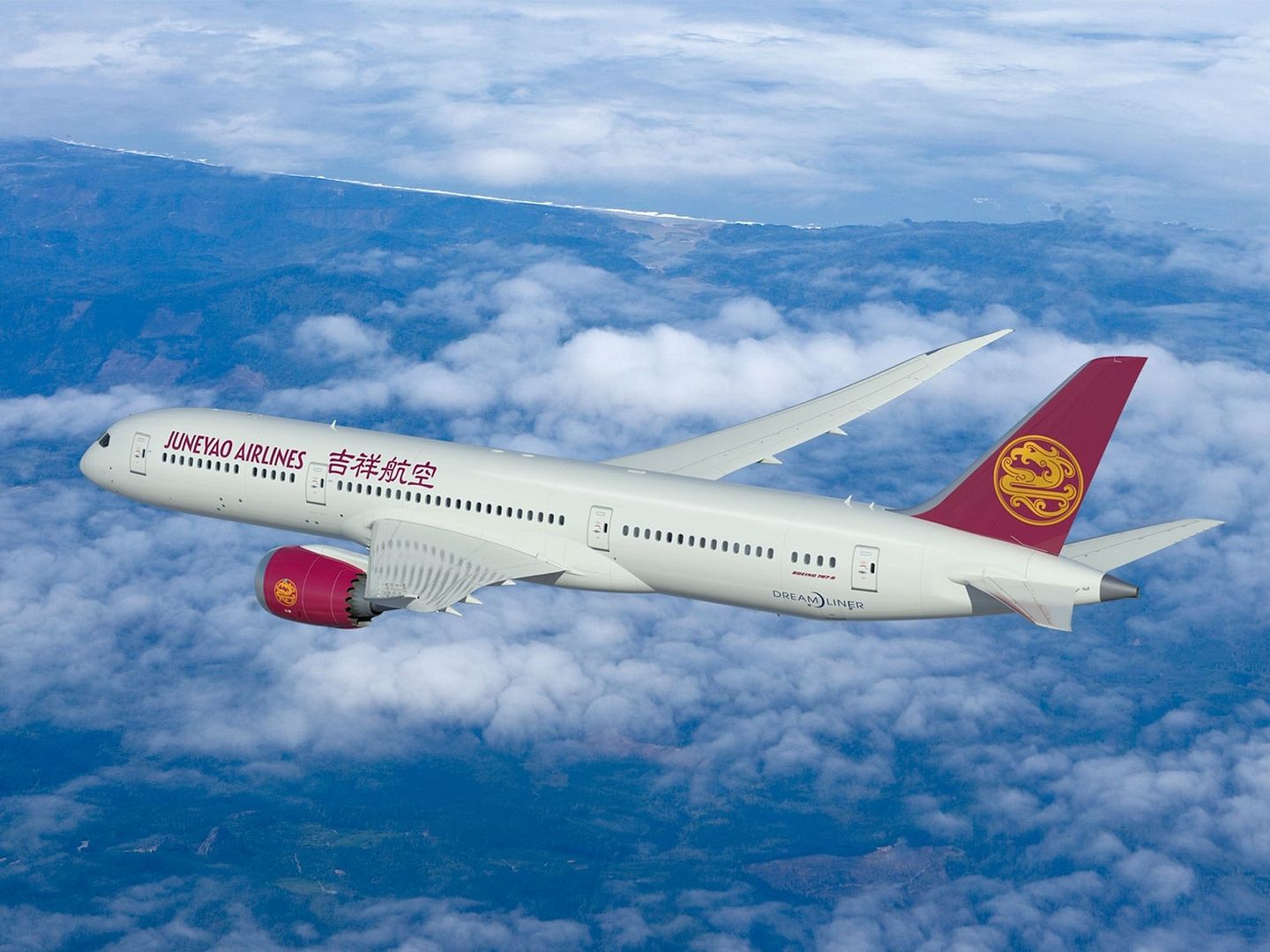
-
 Main AdminA B-52 Stratofortress undergoes a bag lift exercise at Barksdale Air Force Base, La., Feb. 16, 2017. A pneumatic lifting bag raises an aircraft that has experienced a landing gear failure or from terrain where it is impractical or impossible to use standard aircraft jacks. Air Force Global Strike Command, 2nd Bomb Wing, 307th Bomb Wing and Sheppard Air Force base combined their efforts to lift a B-52 that was damaged in a fire more than two years ago. This raise has not been attempted since 1984. (U.S. Air Force photo by Tech. Sgt. Ted Daigle/Released)
Main AdminA B-52 Stratofortress undergoes a bag lift exercise at Barksdale Air Force Base, La., Feb. 16, 2017. A pneumatic lifting bag raises an aircraft that has experienced a landing gear failure or from terrain where it is impractical or impossible to use standard aircraft jacks. Air Force Global Strike Command, 2nd Bomb Wing, 307th Bomb Wing and Sheppard Air Force base combined their efforts to lift a B-52 that was damaged in a fire more than two years ago. This raise has not been attempted since 1984. (U.S. Air Force photo by Tech. Sgt. Ted Daigle/Released)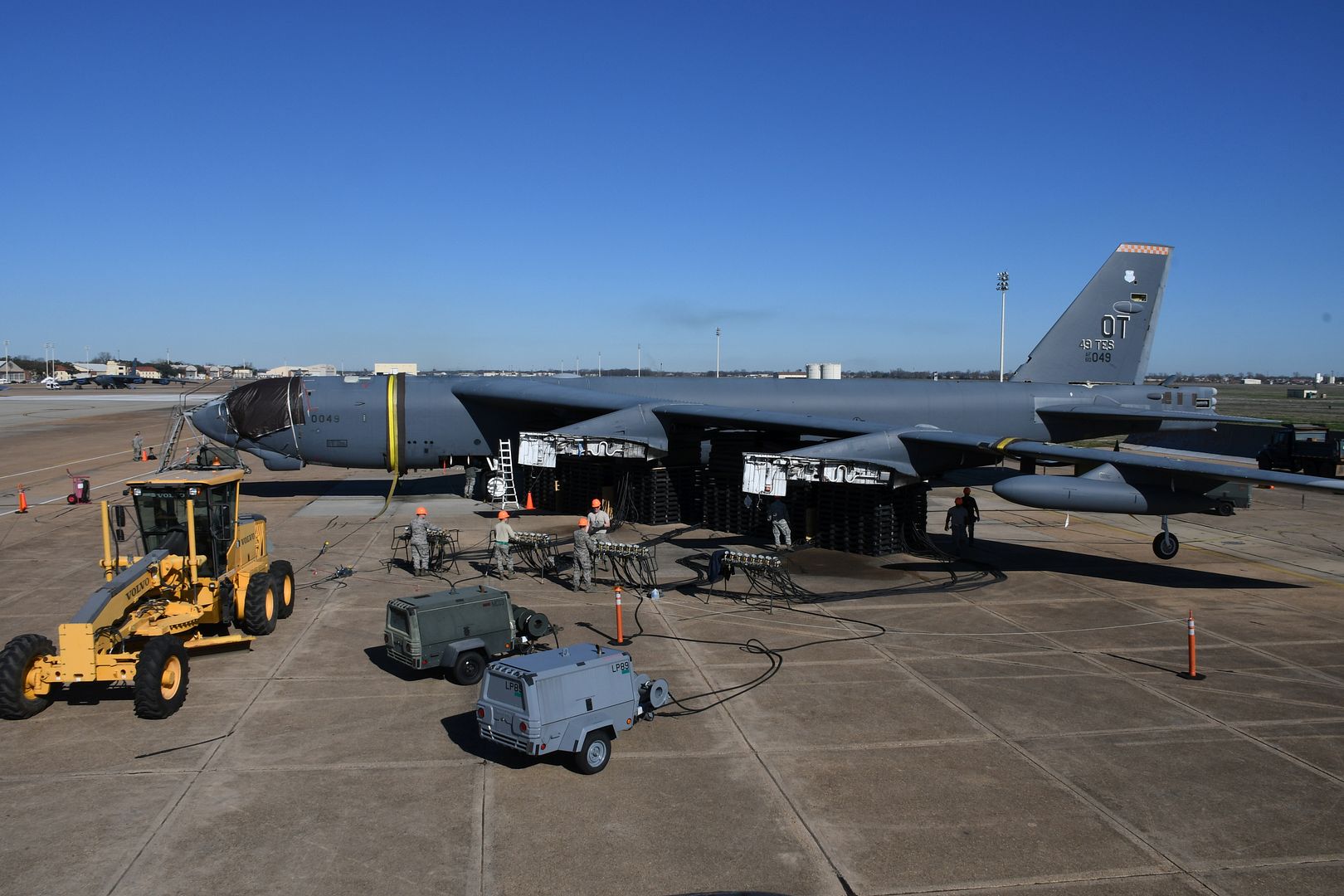
An F-16D Fighting Falcon lands, Feb. 17, 2017, at Moody Air Force Base, Ga. The U.S. Air Force Thunderbirds are known as the ?Ambassadors in Blue,? and will be representing the Air Force during the Thunder Over South Georgia Air Show in October 2017, at Moody AFB. (U.S. Air Force photo by Airman 1st Class Lauren M. Sprunk)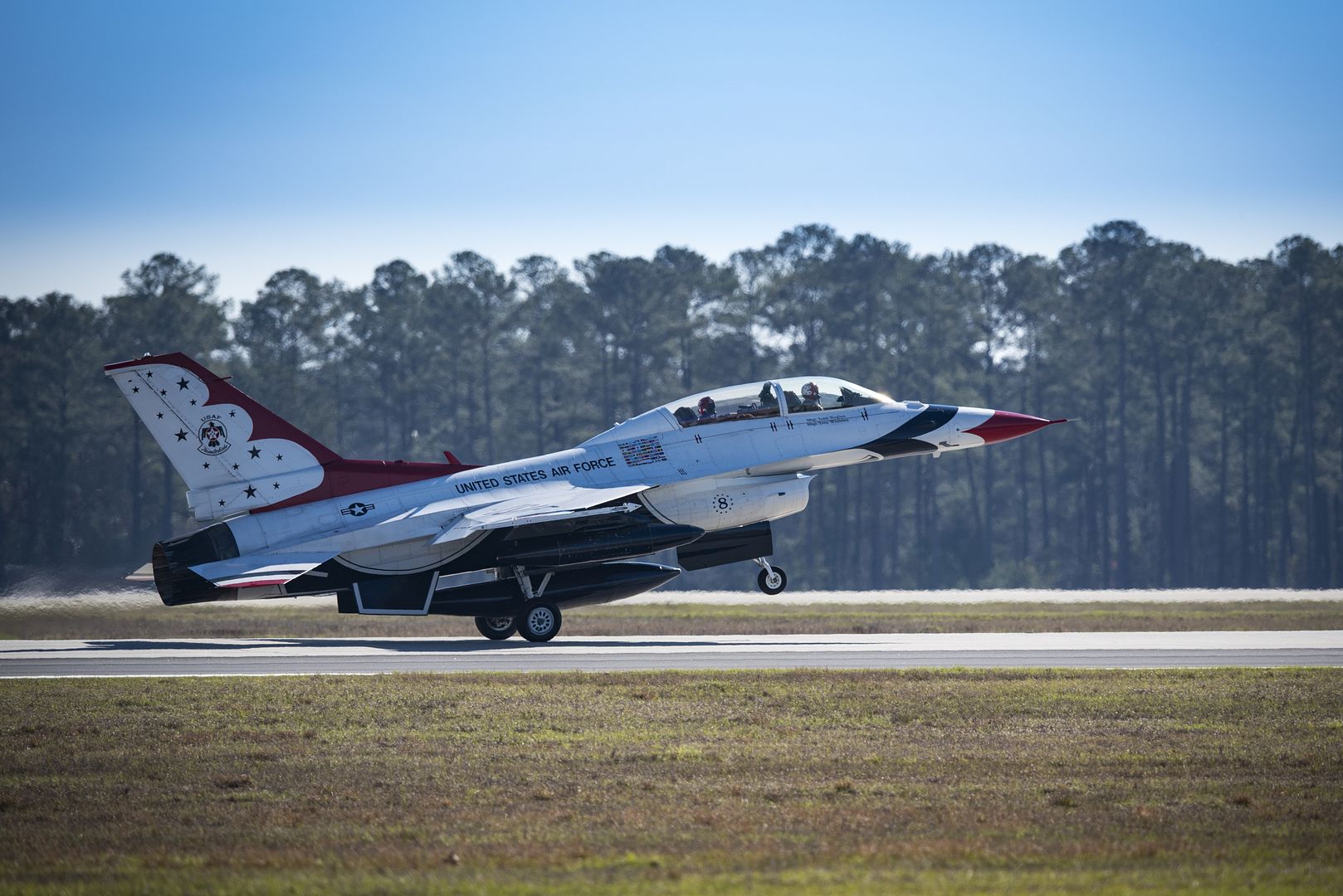
GULF OF THAILAND (Feb. 17, 2017) A Royal Thai Navy helicopter lands on the flight deck of the amphibious transport dock ship USS Green Bay (LPD 20) during deck landing qualifications in support of Exercise Cobra Gold 2017. Cobra Gold is the largest Theater Security Cooperation exercise in the Indo-Asia-Pacific region and is an integral part of the U.S. commitment to strengthen engagement in the region. (U.S. Navy photo by Mass Communication Specialist 1st Class Chris Williamson/Released)
HOLLOMAN AIR FORCE BASE, N.M. (AFNS) -- The QF-16 drone took its first flight at Holloman Air Force Base Feb. 10, 2017.
The manned sortie was the first for the QF-16 at Holloman AFB since the retirement of the QF-4 Phantom in 2016.
?The first flight is significant because it is the first step for us in standing up the QF-16 program,? said Lt. Col. Ronald King, the commander of Detachment 1, 82nd Aerial Targets Squadron. ?Manned flying is critical in our development of the remote control and unmanned mission capabilities necessary for us to provide QF-16 full-scale aerial targets to our Defense Department and foreign military sales customers.?
The upgrade to the QF-16 allows customers to test weapons systems in real-world scenarios before reaching the battlefield.
?Our mission stays the same,? King said. ?However, the QF-16 increases the capabilities we can offer our customers. The QF-16 is a fourth-generation fighter, while the QF-4 was a third-generation fighter. The QF-16 offers more realistic threat replication in performance, maneuverability and capabilities.?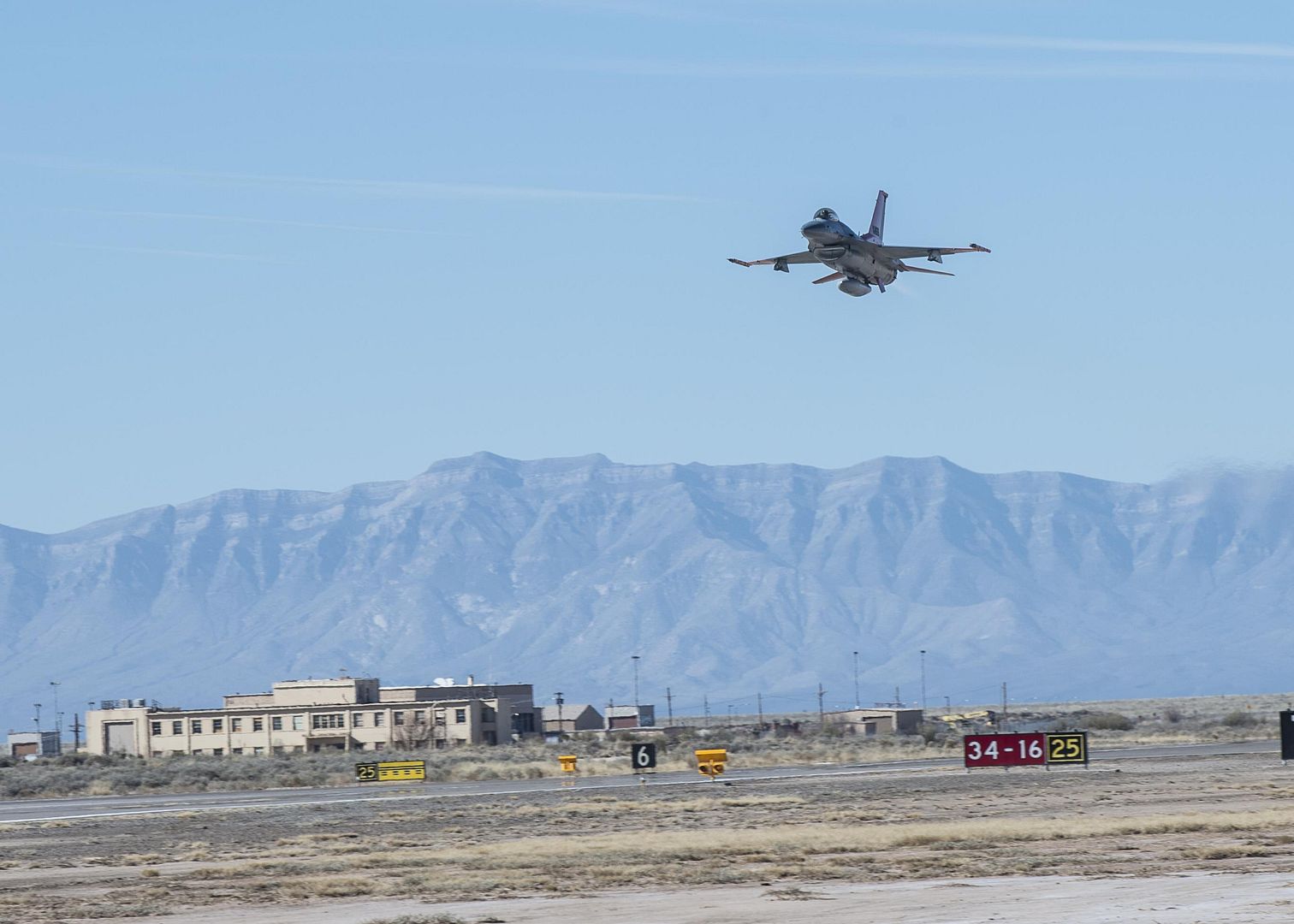
The QF-16 can fly manned or unmanned, depending on the mission and customer?s needs.
?Our flying missions at Holloman are driven by our customer's requirements,? King said. ?Sometimes, when a system is brand new, we may just be flying straight and level with no maneuvers. As a system matures, the complexity of the missions will increase to test and validate the new system.?
The 82nd ATRS is part of the 53rd Weapons Evaluation Group at Eglin AFB, Florida. The group provides the personnel and infrastructure to test and evaluate weapons utilized by the combat air forces of the U.S. and its allies. It operates the only full-scale aerial targets in the DOD. In accordance with U.S. law, Title 10, Section 2366 of the U.S. Code, a missile system must undergo lethality testing before it can enter full-scale production. The 82 ATRS maintains DOD?s sole capability to execute the Title 10 requirement with full-scale aerial targets.
NORTH CHARLESTON, S.C., Feb. 17, 2017 ? The Boeing (NYSE: BA) 787-10 Dreamliner, the third member of the 787 Dreamliner family, made its debut today at Boeing South Carolina. Thousands of employees at the North Charleston, S.C. site celebrated the event, along with U.S. President Donald Trump and South Carolina Governor Henry McMaster.
?What?s happening here at Boeing South Carolina is a true American success story,? said Dennis Muilenburg, Boeing chairman, president and CEO. ?In just a few short years, our team has transformed a greenfield site into a modern aerospace production facility that is delivering 787s to airlines all over the world and supporting thousands of U.S. jobs in the process.?
The 787-10, built exclusively at Boeing South Carolina, will now be prepared for its first flight in the coming weeks.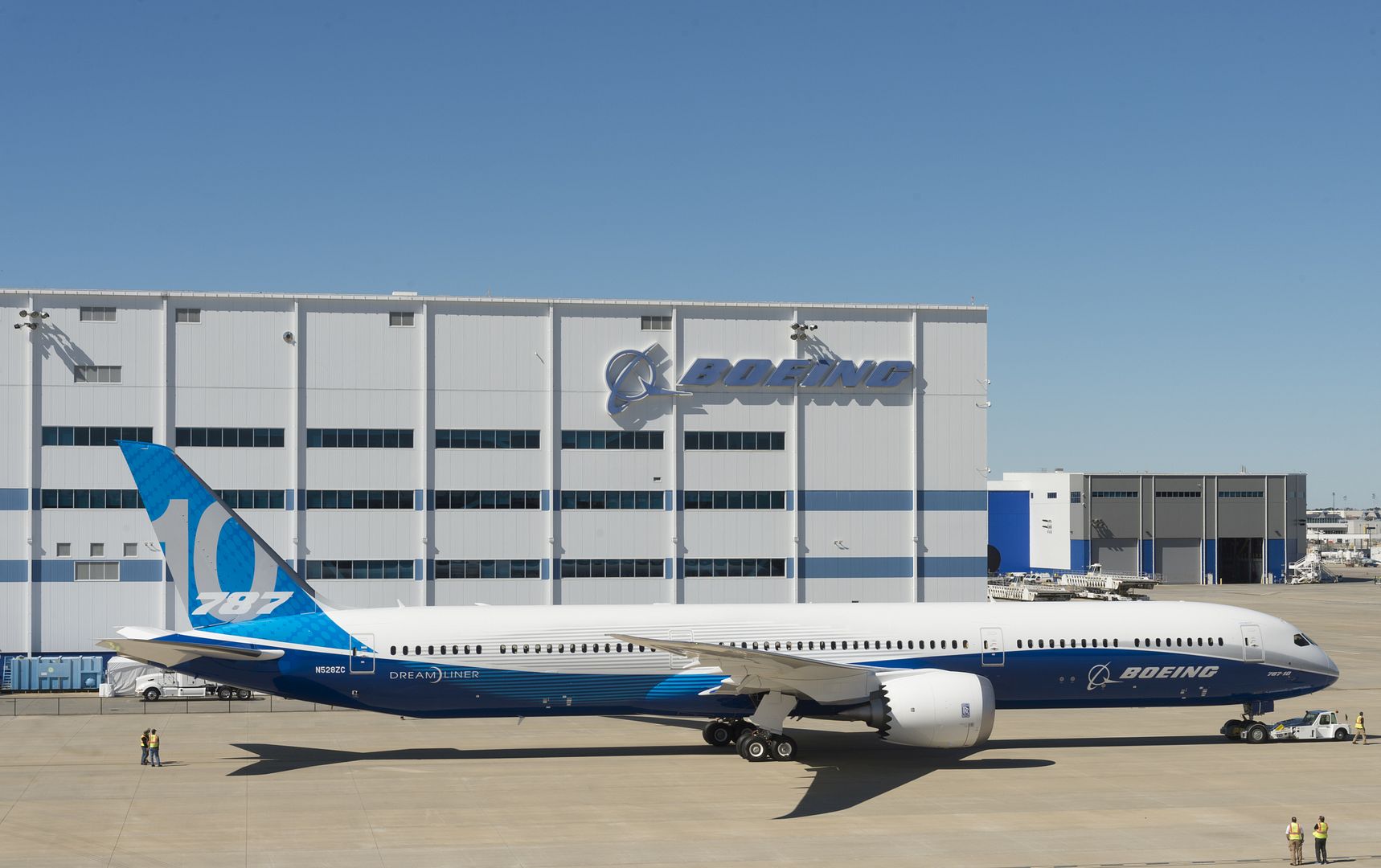
?This airplane, the most efficient in its class, is the result of years of hard work and dedication from our Boeing teammates, suppliers and community partners in South Carolina and across the globe,? said Kevin McAllister, Boeing Commercial Airplanes president and CEO. ?We know our customers, including launch customer Singapore Airlines, are going to love what the 787-10 will do for their fleets, and we can?t wait to see them fly it.?
Boeing will deliver the 787-10 to airlines in 2018. The airplane has won 149 orders from nine customers across the globe.
The 787-10, the longest model of the Dreamliner family, will grow the nonstop routes opened by the 787-8 and 787-9 with unprecedented efficiency. As an 18-foot (5.5-m) stretch of the 787-9, the 787-10 will deliver the 787 family?s preferred passenger experience and long range with up to 10 percent better fuel use and emissions than the competition. The 787 Dreamliner family is a key part of Boeing?s twin-aisle strategy, which offers a modern, optimized and efficient airplane family in every market segment. Since entering service in 2011, the 787 family has flown more than 140 million people on 530 routes around the world, saving an estimated 13 billion pounds of fuel.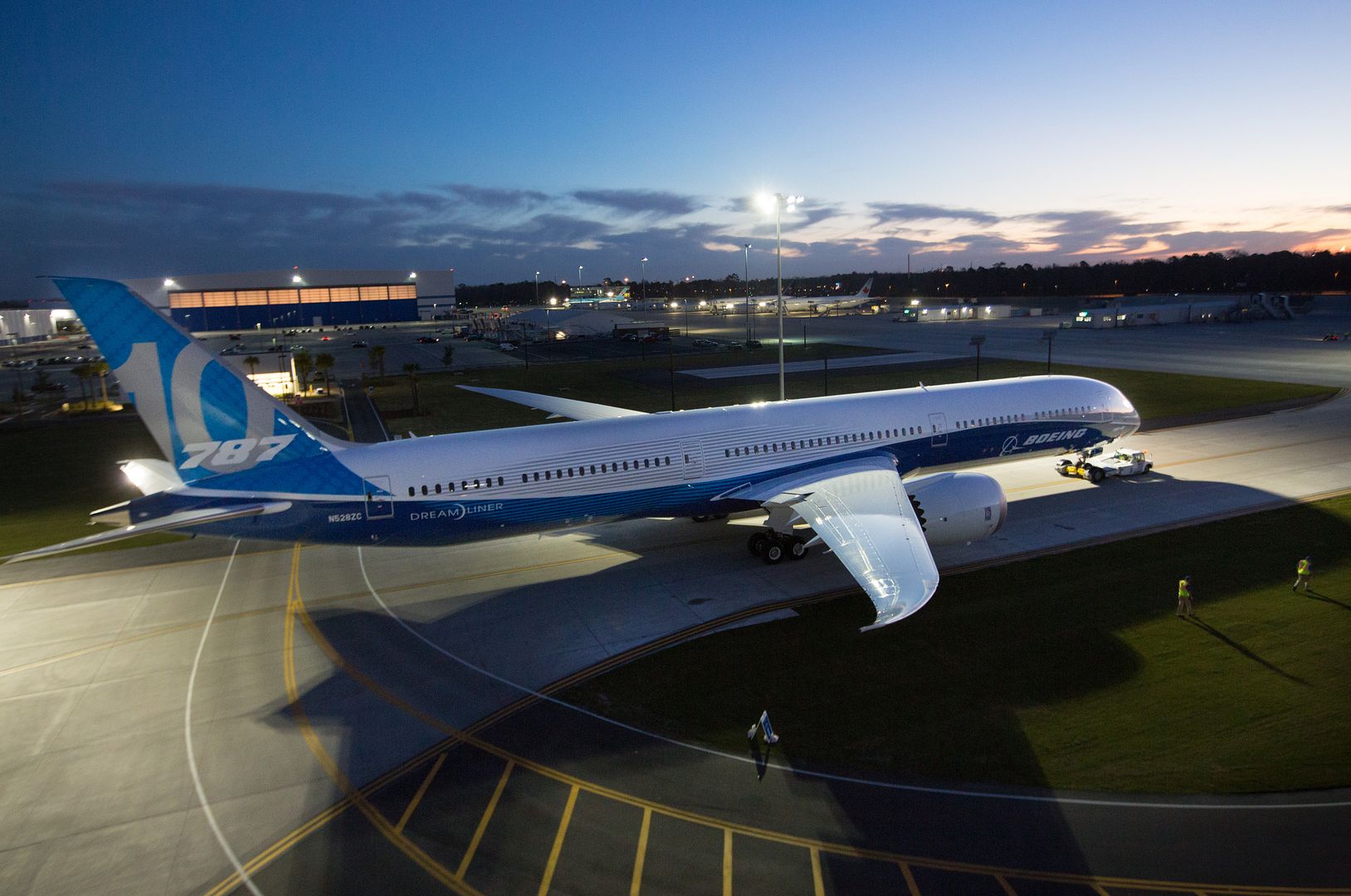
-
 Main AdminSOUTHWEST ASIA (AFNS) -- Airmen assigned to the 332nd Air Expeditionary Wing take great pride in the heritage created for them by the Tuskegee Airmen.
Main AdminSOUTHWEST ASIA (AFNS) -- Airmen assigned to the 332nd Air Expeditionary Wing take great pride in the heritage created for them by the Tuskegee Airmen.
Today a key piece of the wing?s history has once again returned to its flightline.
The legacy of the Tuskegee Airmen was born in Montgomery, Alabama, when the Tuskegee Institute?s application to conduct civilian pilot training was approved by the Civil Aeronautics Administration in the fall of 1939.
About one year later President Franklin D. Roosevelt?s administration announced the Army Air Corps would begin training black military pilots, and the place to do it was Tuskegee, Alabama.
So began the storied history of the Tuskegee Airmen. Flying their P-51 Mustangs, with tails painted bright red, the Airmen fought valiantly through World War II under the crest of the 332nd Fighter Group.
Now more than 75 years later, a red-tailed fighter jet from Montgomery again flies with the 332nd.
The lineage of the Tuskegee Airmen has been passed to Alabama Air National Guard?s 187th Fighter Wing. An F-16 Fighting Falcon from the unit is currently flying with the 134th Expeditionary Fighter Squadron, which is one of the squadrons assigned to the 332nd AEW.
?It is well documented that our WWII bomber pilots would look out their windows and gain confidence from Red Tail fighters flying beside them. It has been stated they took comfort in knowing their chances for survival were higher with a Red Tail escort than from any other outfit in 12th and 15th Air Force,? said Col. David C. Lyons, the 407th Air Expeditionary Group commander. ?Now we have one of those Red Tails on our flightline, once again flying with the 332nd and creating the next chapter of Red Tail history.?
The mission of the unit is to support Operation Inherent Resolve in the fight against the Islamic State of Iraq and Syria by providing air-to-ground combat airpower at the request of the combined joint task force commander.
The 134th EFS has been heavily involved in the fight, flying more than 500 missions, delivering more than 800 weapons, and making significant contributions to the fight in Mosul, Iraq, and Raqqa, Syria.
?We are talking about liberating cities,? Lyons said. ?That is something we haven?t talked about in this way since WWII.?
The Airmen of the 134th EFS flying the missions to liberate cities in Iraq and Syria are deployed from the Vermont Air National Guard.
The red tail was provided to the Vermont ANG along with F-16s from the New Jersey and Wisconsin ANGs to ensure the squadron had enough capable aircraft to meet the short-notice deployment to support OIR.
At least one Airman from the Vermont ANG takes a special amount of pride in seeing the red tail on the flightline with his unit.
During a formal dinner hosted by the Vermont ANG, Chief Master Sgt. Brian Senecal, of the 407th Expeditionary Maintenance Squadron, had the opportunity to host Col. Charles McGee. McGee is one of the Tuskegee Airmen and also holds an Air Force record for flying 409 combat missions in WWII, the Korean War and the Vietnam War.
?Honestly it was the highlight of my whole military career to spend time with the guy ? to meet someone who gave some much,? Senecal said. ?Most Soldiers and Sailors were welcomed back from World War II with open arms and the Tuskegee Airmen had to come back to a still-segregated America.?
Despite the discrimination the Tuskegee Airmen faced at the time, their trailblazing efforts have left a legacy of which all Airmen can be proud.
?It is an honor to continue the tradition started by the original Tuskegee Airmen and to be carrying on their good name 75 years later,? Senecal said.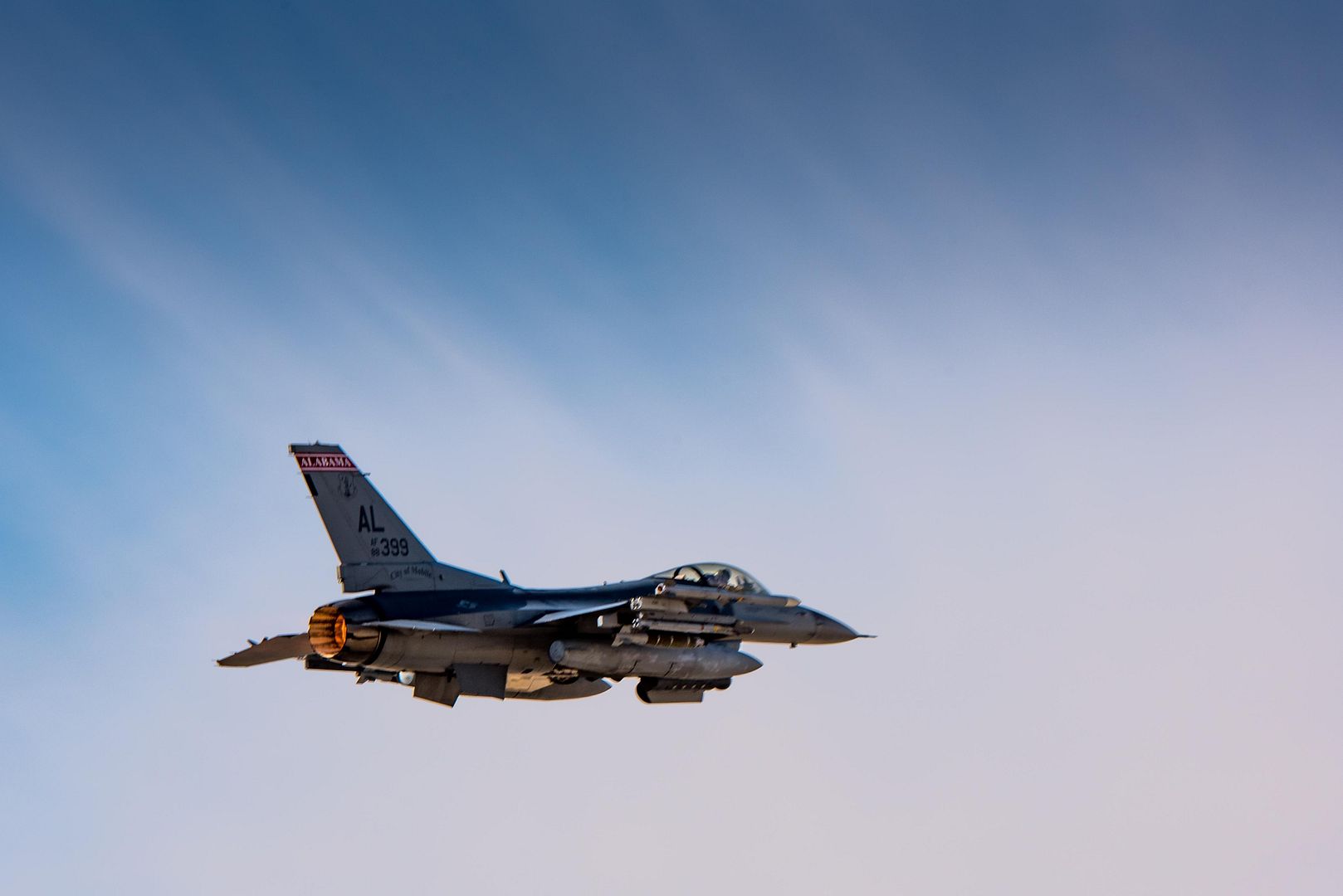
U.S. Air Force F-15 Eagles from the 67th Fighter Squadron taxi down the flightline Feb. 20, 2017, at Andersen Air Force Base, Guam. The aircraft temporarily relocated to Guam to train and conduct simulated combat scenarios with regional allies and partners. Cope North is an annual exercise which serves as a keystone event to promote stability and security throughout the Indo-Asia Pacific by enabling regional forces to hone vital readiness skills. (U.S. Air Force photo by Senior Airman John Linzmeier/released)
A U.S. Air Force F-15 Eagle from the 67th Fighter Squadron takes off Feb. 20, 2017, at Andersen Air Force Base, Guam. The 67th FS, from Kadena Air Base, Japan, is conducting an array of flight operations with other units from U.S. Pacific Air Forces, along with the U.S. Navy and Japan and Australian air forces. The annual exercise provides opportunities for allied units to develop combat capabilities, enhance air superiority, electronic warfare, air interdiction, tactical airlift and aerial refueling. (U.S. Air Force photo by Senior Airman John Linzmeier/released)
NORTH CHARLESTON, S.C., Feb. 17, 2017,another shot of 787-10 Dreamliner roll out, the third member of the 787 Dreamliner family.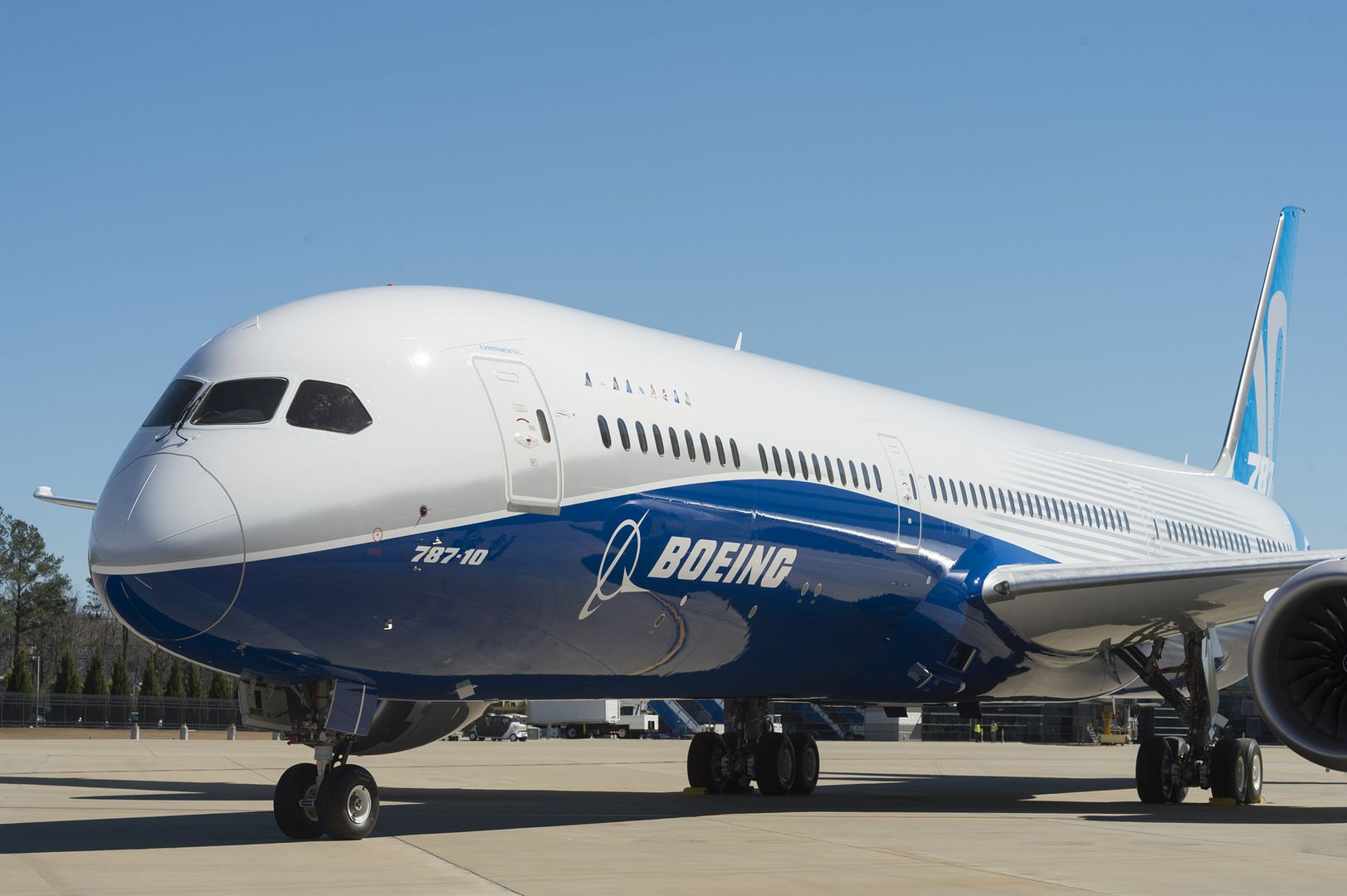
-
 Main AdminAn RQ-4 Global Hawk descends during a landing after completing a sortie in support of Operation Inherent Resolve at an undisclosed location in Southwest Asia, Feb. 20, 2017. During the landing a chase car, operated by an RQ-4 Global Hawk pilot, assisted in the landing of the remotely piloted aircraft. (U.S. Air Force photo/Senior Airman Tyler Woodward)
Main AdminAn RQ-4 Global Hawk descends during a landing after completing a sortie in support of Operation Inherent Resolve at an undisclosed location in Southwest Asia, Feb. 20, 2017. During the landing a chase car, operated by an RQ-4 Global Hawk pilot, assisted in the landing of the remotely piloted aircraft. (U.S. Air Force photo/Senior Airman Tyler Woodward)
A U.S. Air Force F-16 Fighting Falcon refuels from a 340th Expeditionary Air Refueling Squadron KC-135 Stratotanker in support of Operation Inherent Resolve, Feb. 15, 2017. The 340th EARS extended the fight against Islamic State of Iraq and Syria terrorists by delivering fuel to U.S. Air Force F-16 Fighting Falcons, A-10 Thunderbolt IIs and a B-52 Stratofortress. (U.S. Air Force photo by Senior Airman Jordan Castelan)
A U.S. Air Force B-52 Stratofortress peels off after refueling from a 340th Expeditionary Air Refueling Squadron KC-135 Stratotanker in support of Operation Inherent Resolve, Feb. 15, 2017. The 340th EARS extended the fight against Islamic State of Iraq and Syria terrorists by delivering fuel to U.S. Air Force F-16 Fighting Falcons, A-10 Thunderbolt IIs and a B-52 Stratofortress. (U.S. Air Force photo by Senior Airman Jordan Castelan)
A U.S. Air Force B-52 Stratofortress refuels from a 340th Expeditionary Air Refueling Squadron KC-135 Stratotanker in support of Operation Inherent Resolve, Feb. 15, 2017. The 340th EARS extended the fight against Islamic State of Iraq and Syria terrorists by delivering fuel to U.S. Air Force F-16 Fighting Falcons, A-10 Thunderbolt IIs and a B-52 Stratofortress. (U.S. Air Force photo by Senior Airman Jordan Castelan)
Two U.S. Air Force A-10 Thunderbolt IIs fly in a wingtip formation after refueling from a 340th Expeditionary Air Refueling Squadron KC-135 Stratotanker in support of Operation Inherent Resolve, Feb. 15, 2017. The 340th EARS extended the fight against Islamic State of Iraq and Syria terrorists by delivering fuel to U.S. Air Force F-16 Fighting Falcons, A-10 Thunderbolt IIs and a B-52 Stratofortress. (U.S. Air Force photo by Senior Airman Jordan Castelan)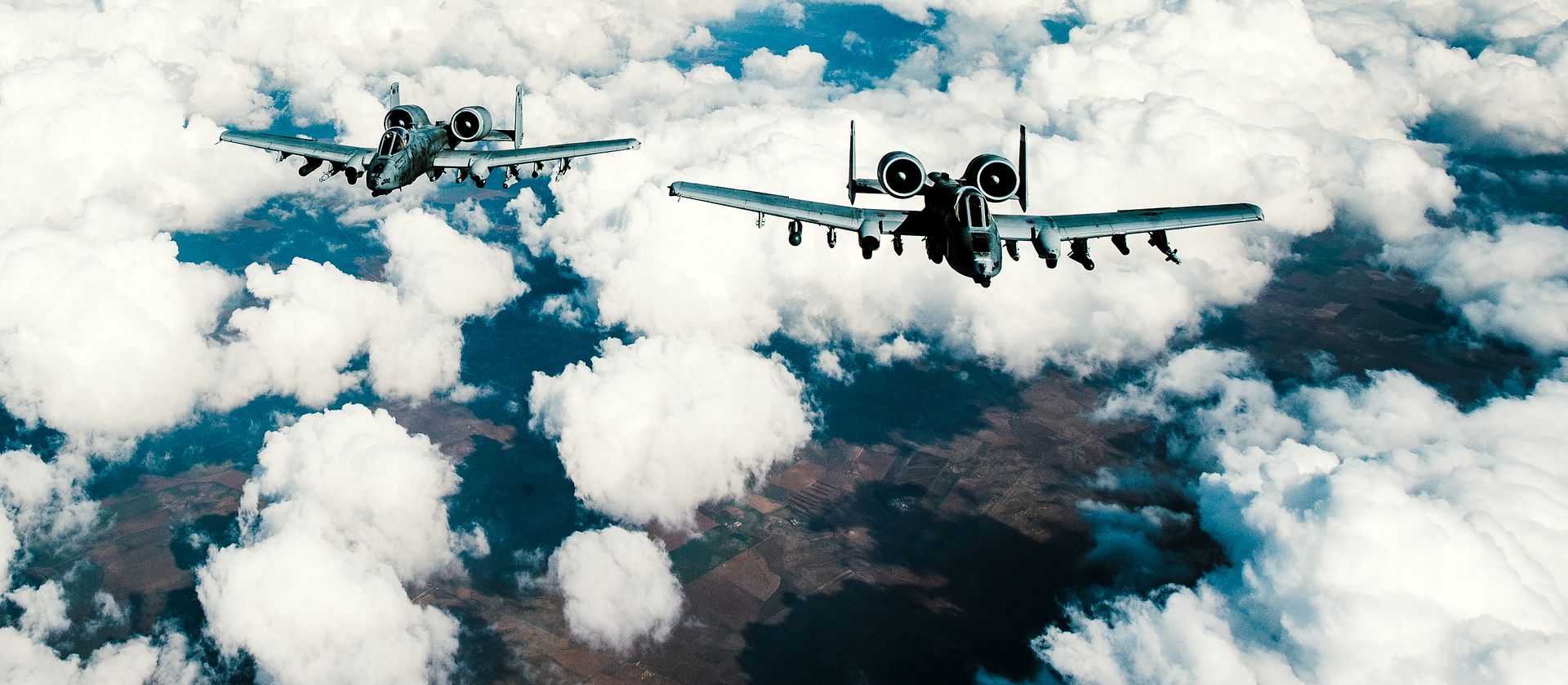
U.S. Marine All-Weather Fighter Attack Squadron-242 participates in a flight exercise with the Royal Thai Air Force, February 20th, as part of Exercise Cobra Gold 17. Joined by the Airmen from the 35th Fighter Squadron (FS) stationed at Kunsan Air Base, South Korea, the three forces practiced defensive counter air tactics against mock enemies. ?Basically we were defending a point against a set of [mock] enemy aircraft,? said U.S. Air Force 1st Lt. Matthew ?Stab? Schuetz, 35th FS wingman. The two nations will be flying together conducting various training scenarios, building greater interoperability in planning and executing complex and realistic, multinational force and combined task force operations. (U.S. Army Photo by Spc. Brianne Kim)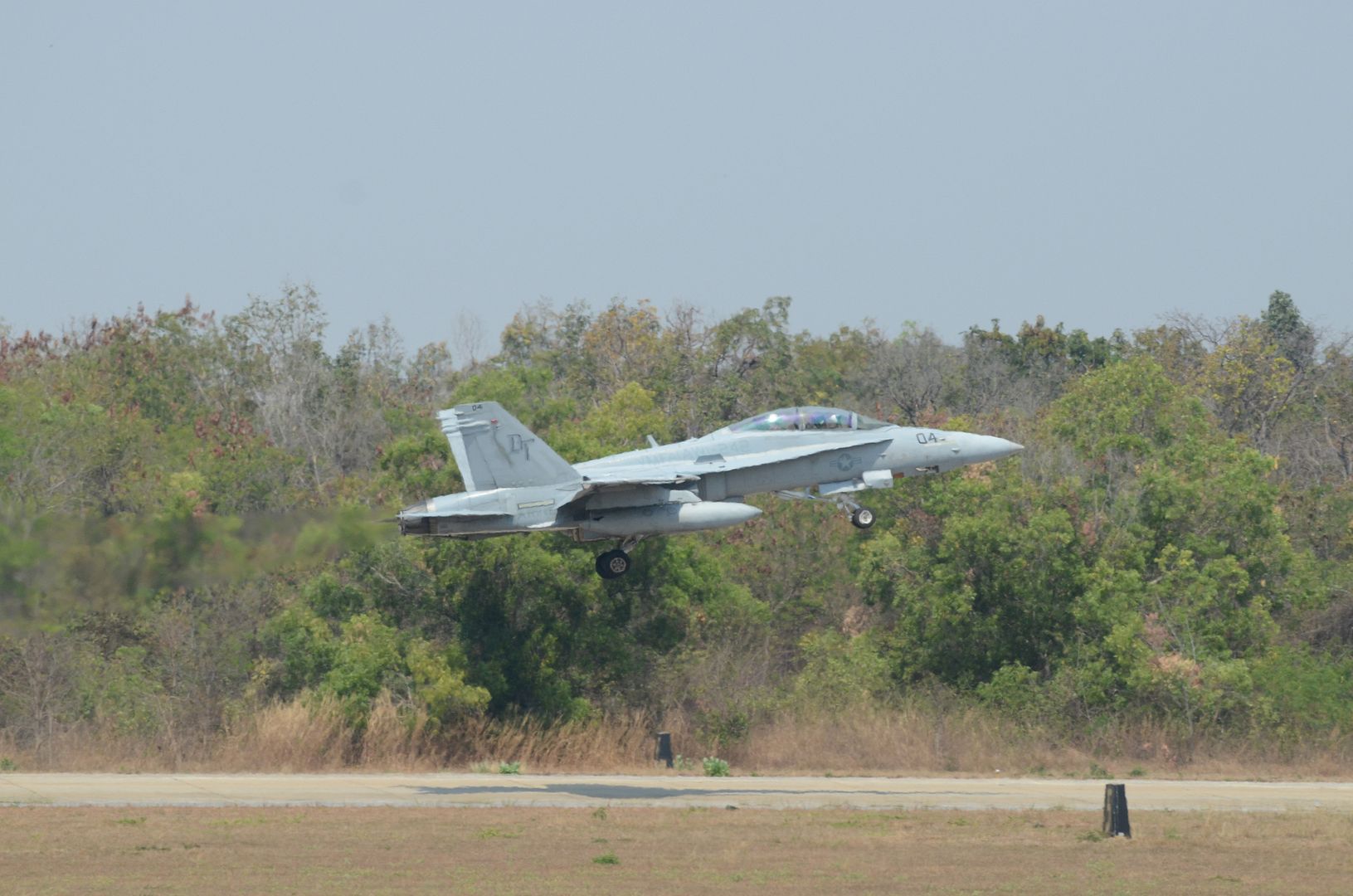
GREENVILLE, S.C., Feb. 20, 2017 /PRNewswire/ -- Two Lockheed Martin (NYSE: LMT) T-50A aircraft are now soaring together in the skies over Greenville, South Carolina. The inaugural Feb. 20 flight of the second production-ready T-50A from Lockheed Martin's Advanced Pilot Training (APT) operations center in Greenville further demonstrates the company's established, lowest-risk offering in the U.S. Air Force's T-X competition.
In February 2016, Lockheed Martin announced its plan to offer the T-50A in the APT competition and build the aircraft at a final assembly and checkout (FACO) facility in Greenville. Lockheed Martin formally unveiled its T-50A FACO and operations center in August 2016.
The T-50A is ready on day one of contract award and is purpose-built around 5th Generation thinking. It will train the F-22 Raptor and F-35 Lightning II pilots of tomorrow, as well as pilots for frontline 4th Generation aircraft. The low risk T-50A builds upon the proven heritage of the T-50 with more than 150 T-50s flying today ? 200,000 flight hours and counting ? and more than 1,800 pilots who have trained in this aircraft.
Lockheed Martin's accompanying T-50A Ground-Based Training System features innovative technologies that deliver an immersive, synchronized ground-based training platform. The T-50A team also brings extensive experience in world-class, worldwide logistics support.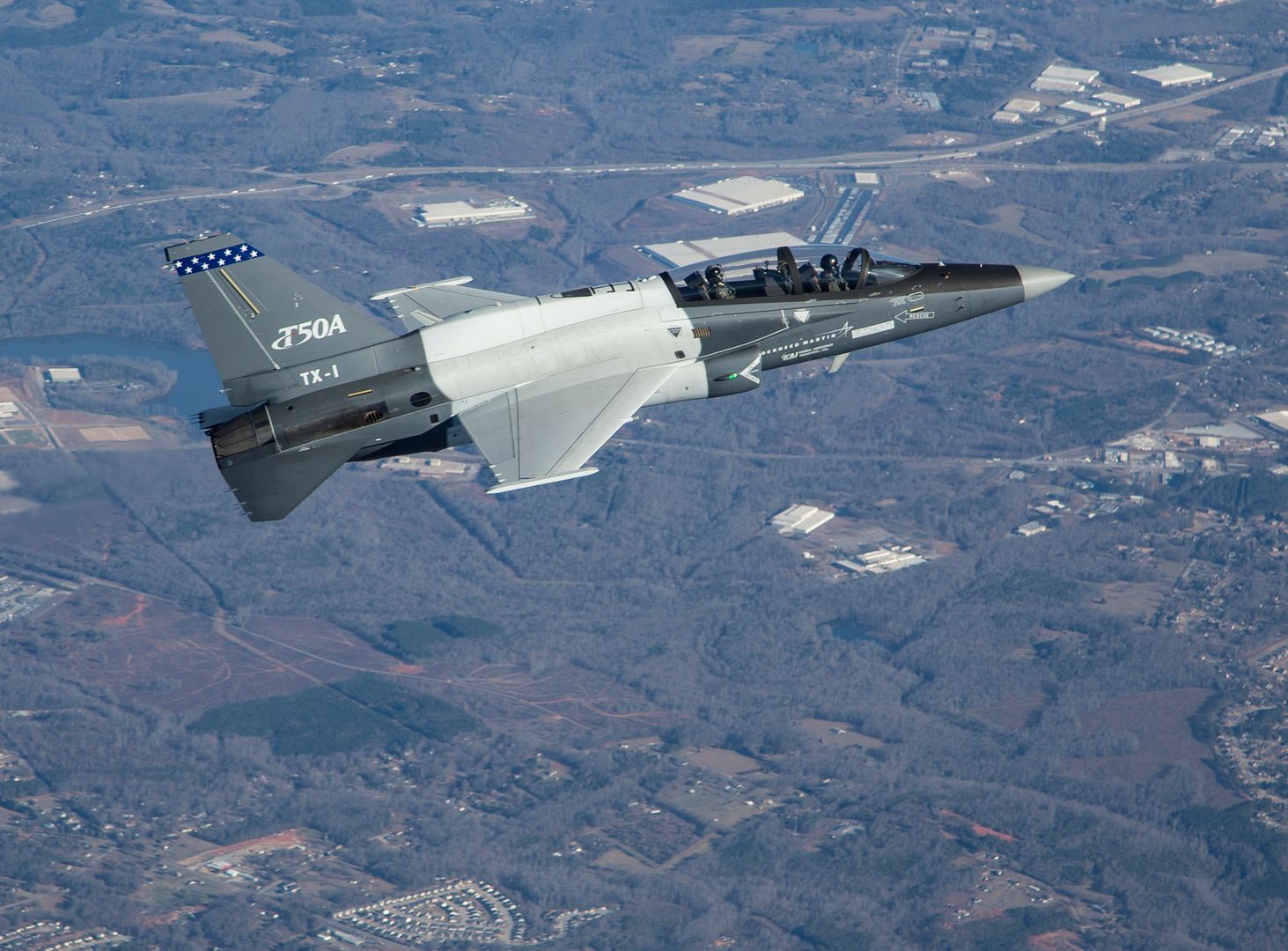
Post a reply
- Go to Next topic
- Go to Welcome
- Go to Introduce Yourself
- Go to General Discussion
- Go to Screenshots, Images and Videos
- Go to Off topic
- Go to Works in Progress
- Go to Skinning Tips / Tutorials
- Go to Skin Requests
- Go to IJAAF Library
- Go to Luftwaffe Library
- Go to RAF Library
- Go to USAAF / USN Library
- Go to Misc Library
- Go to The Ops Room
- Go to Made in Germany
- Go to Campaigns and Missions
- Go to Works in Progress
- Go to Juri's Air-Raid Shelter
- Go to Campaigns and Missions
- Go to Works in Progress
- Go to Skinpacks
- Go to External Projects Discussion
- Go to Books & Resources
